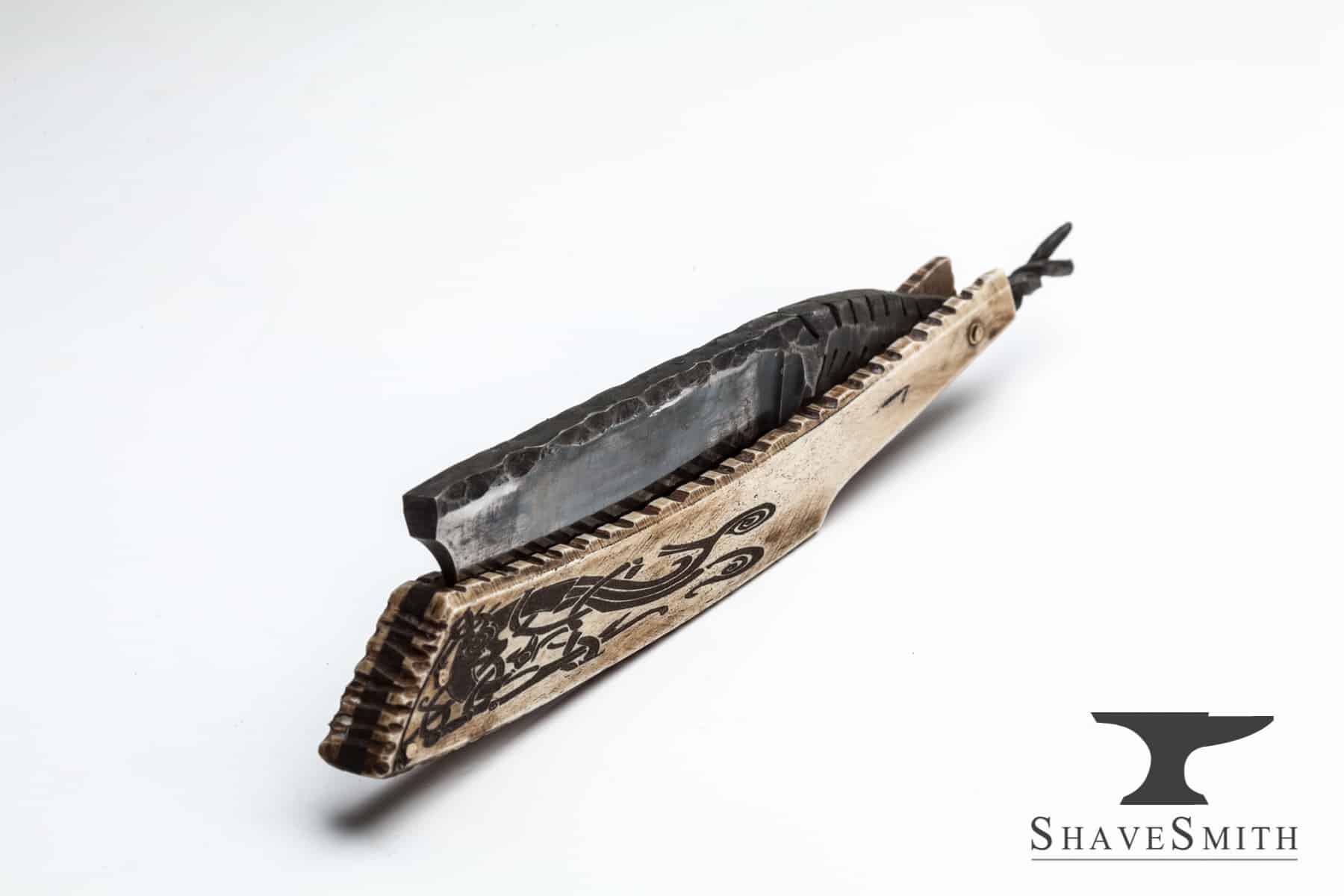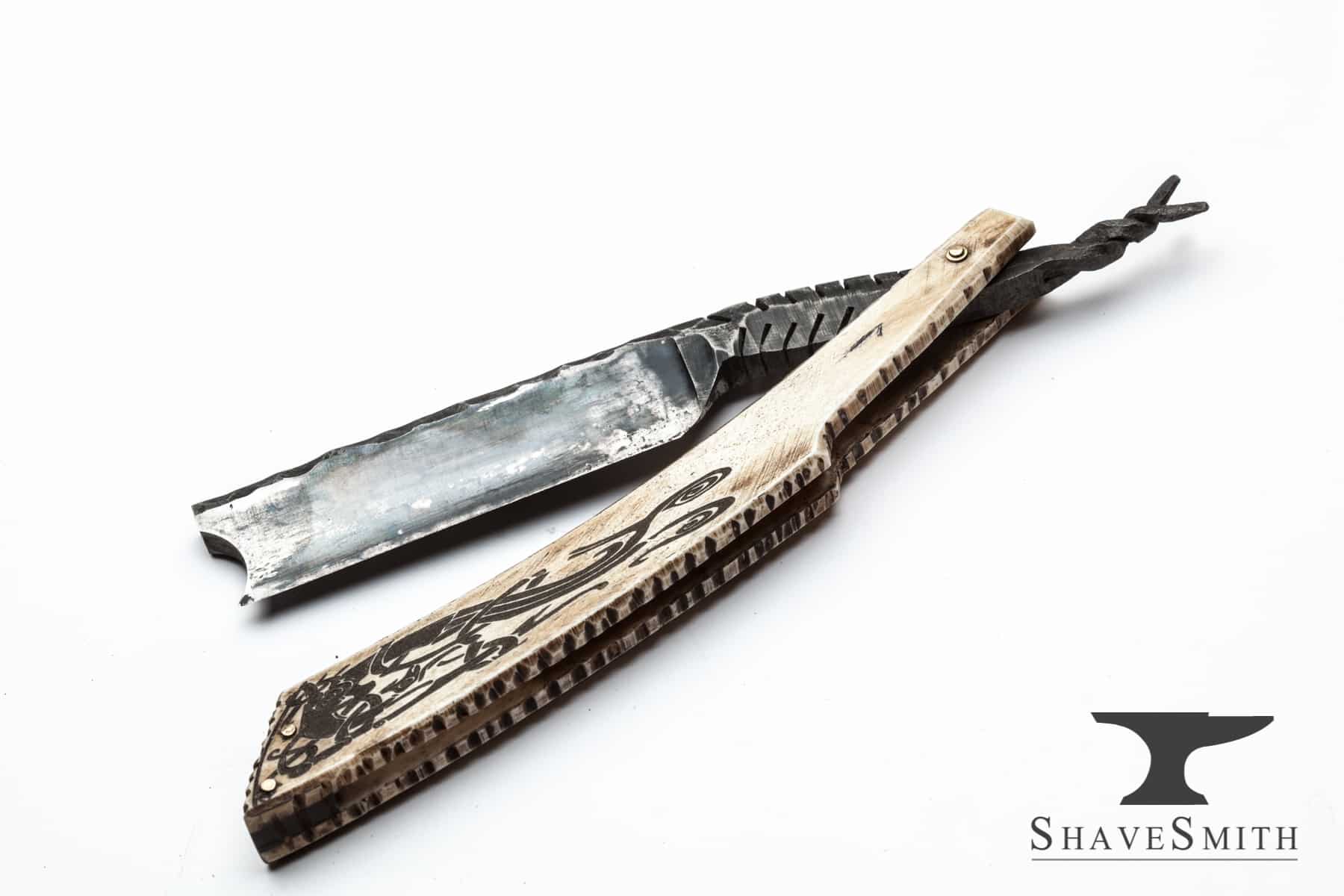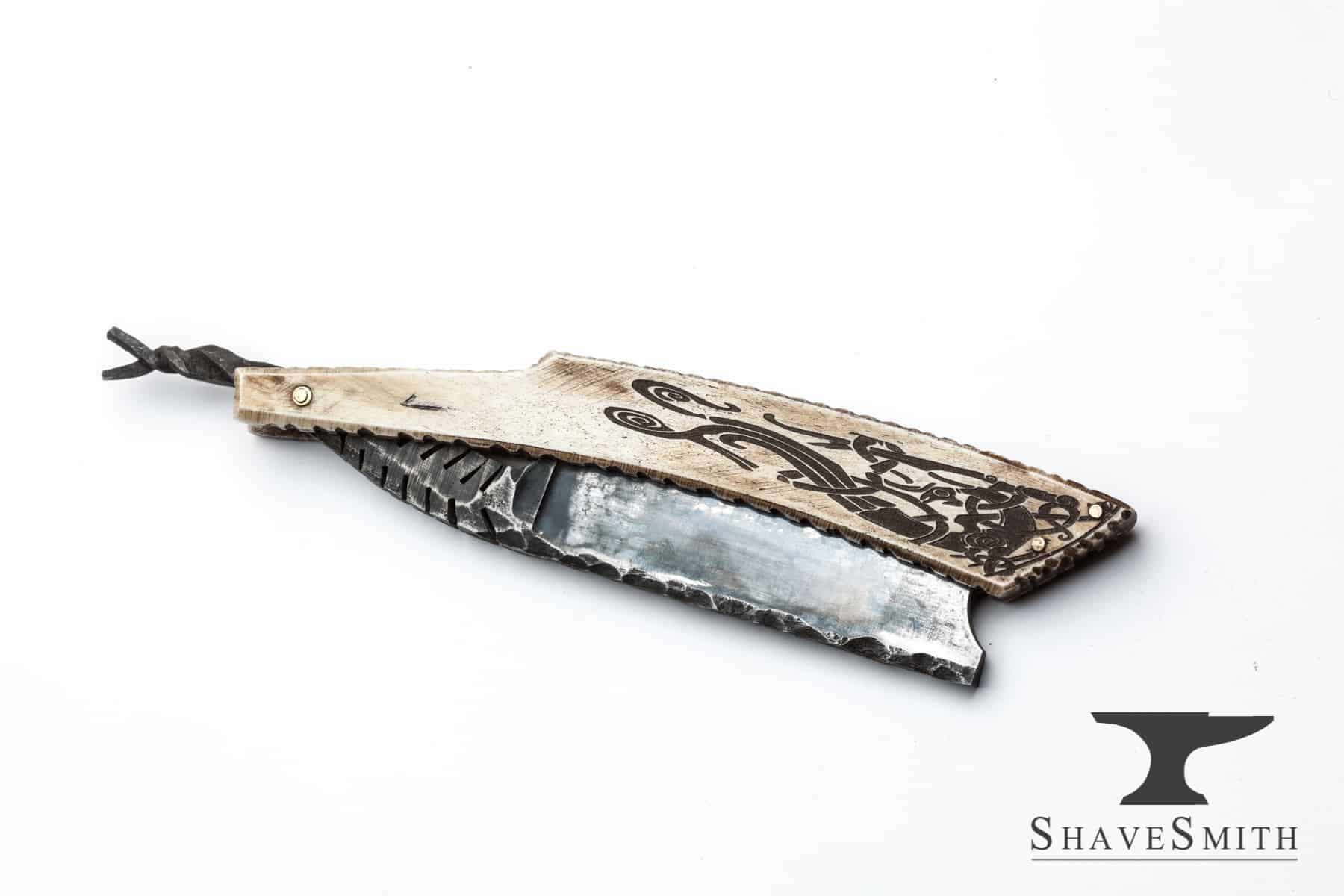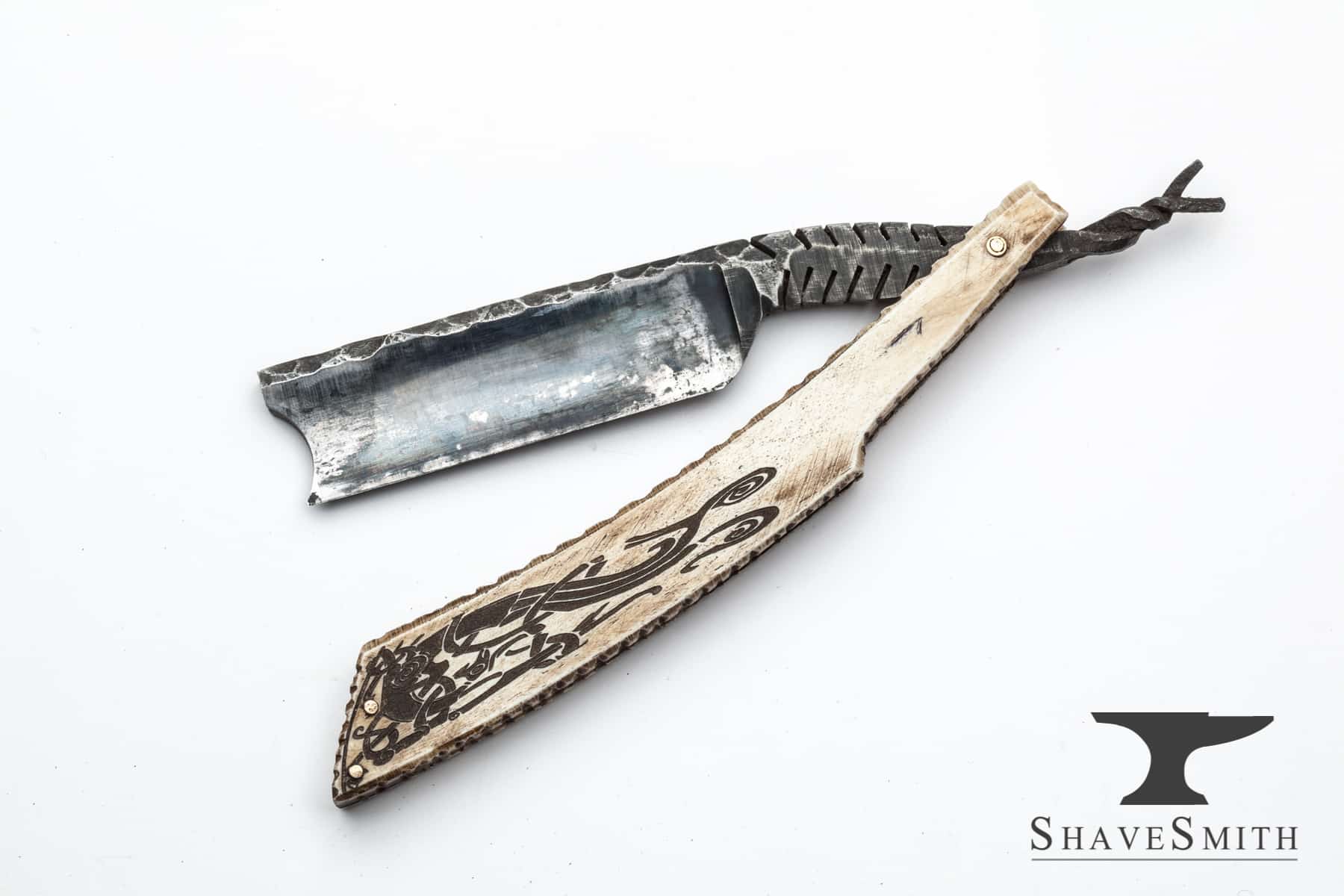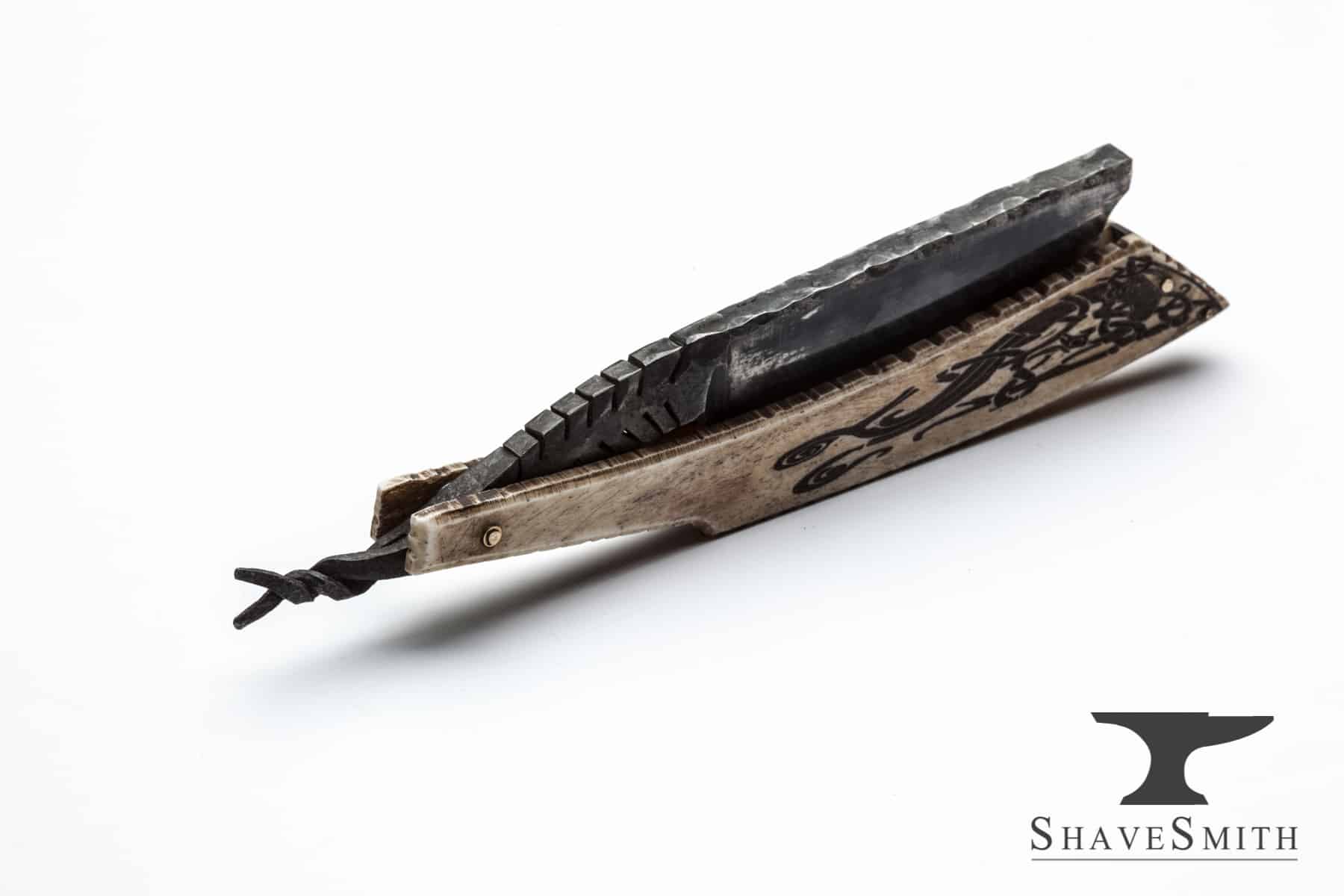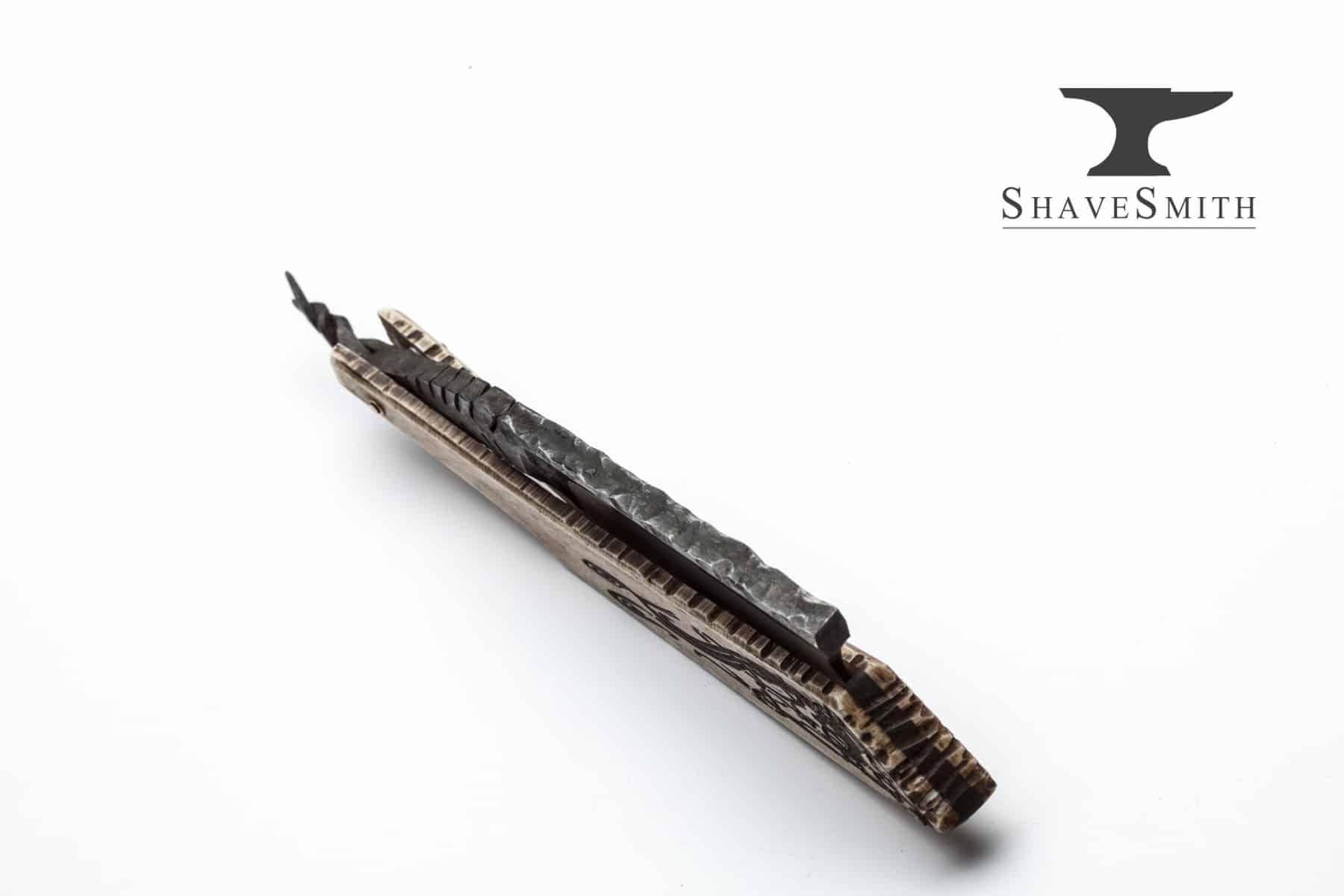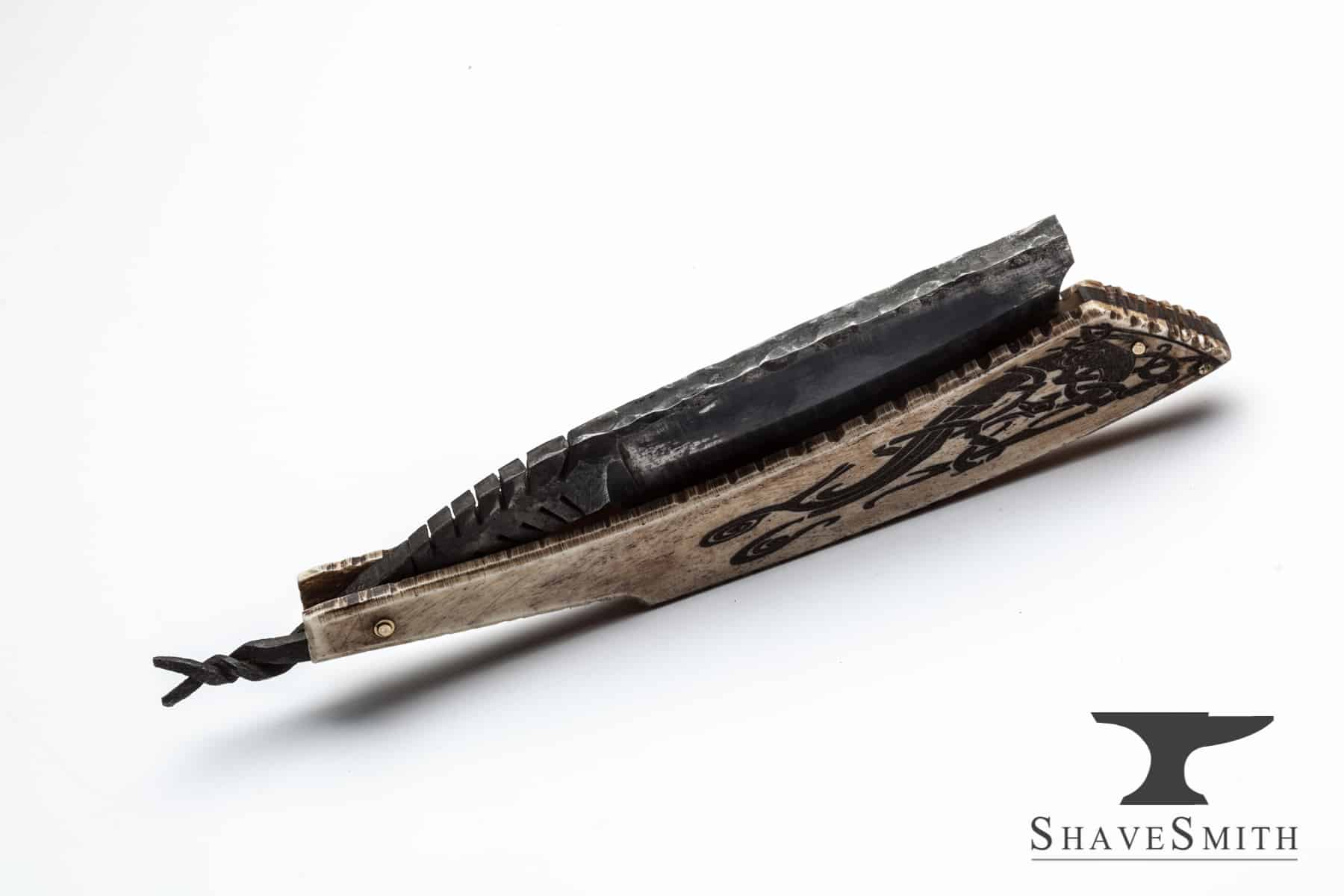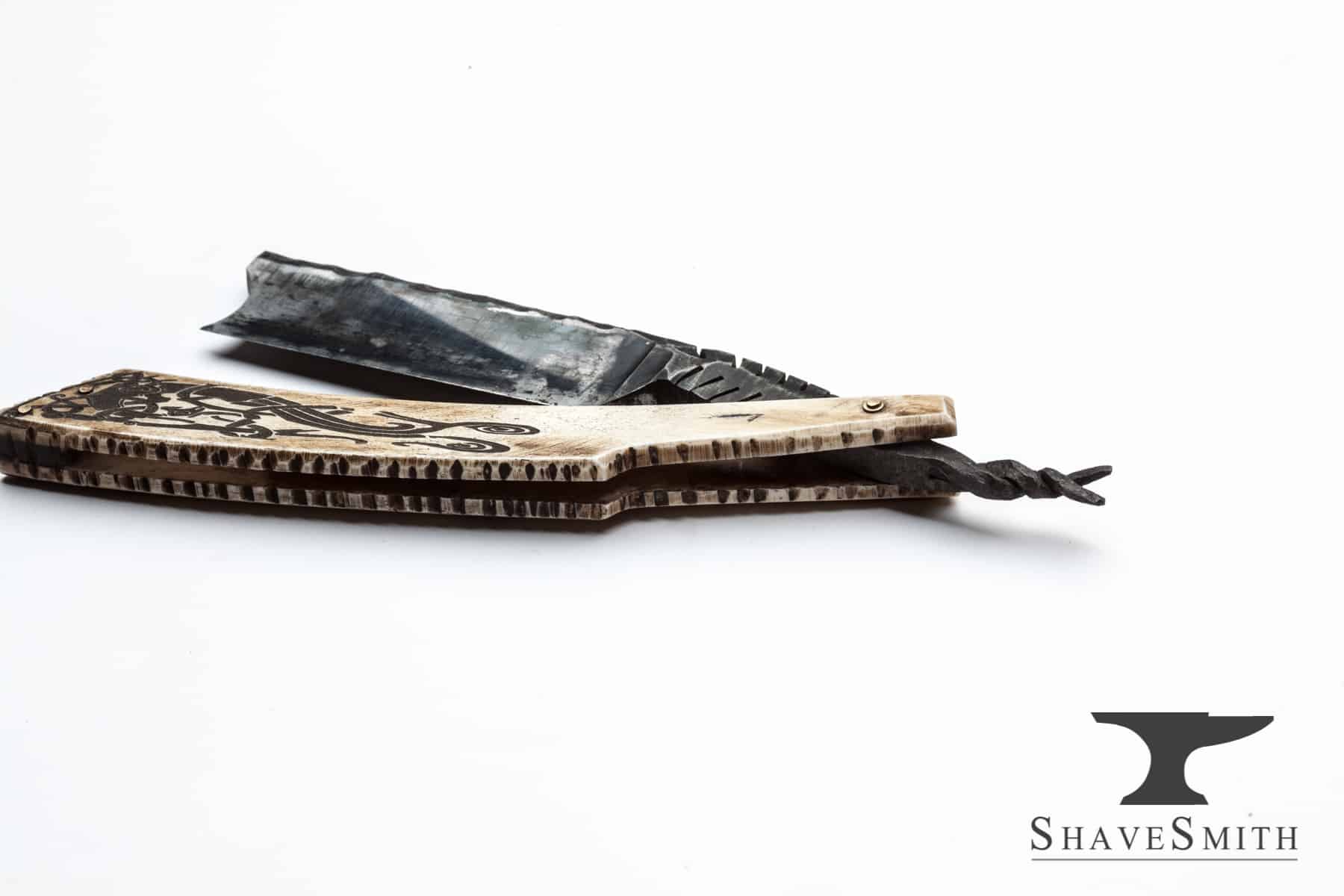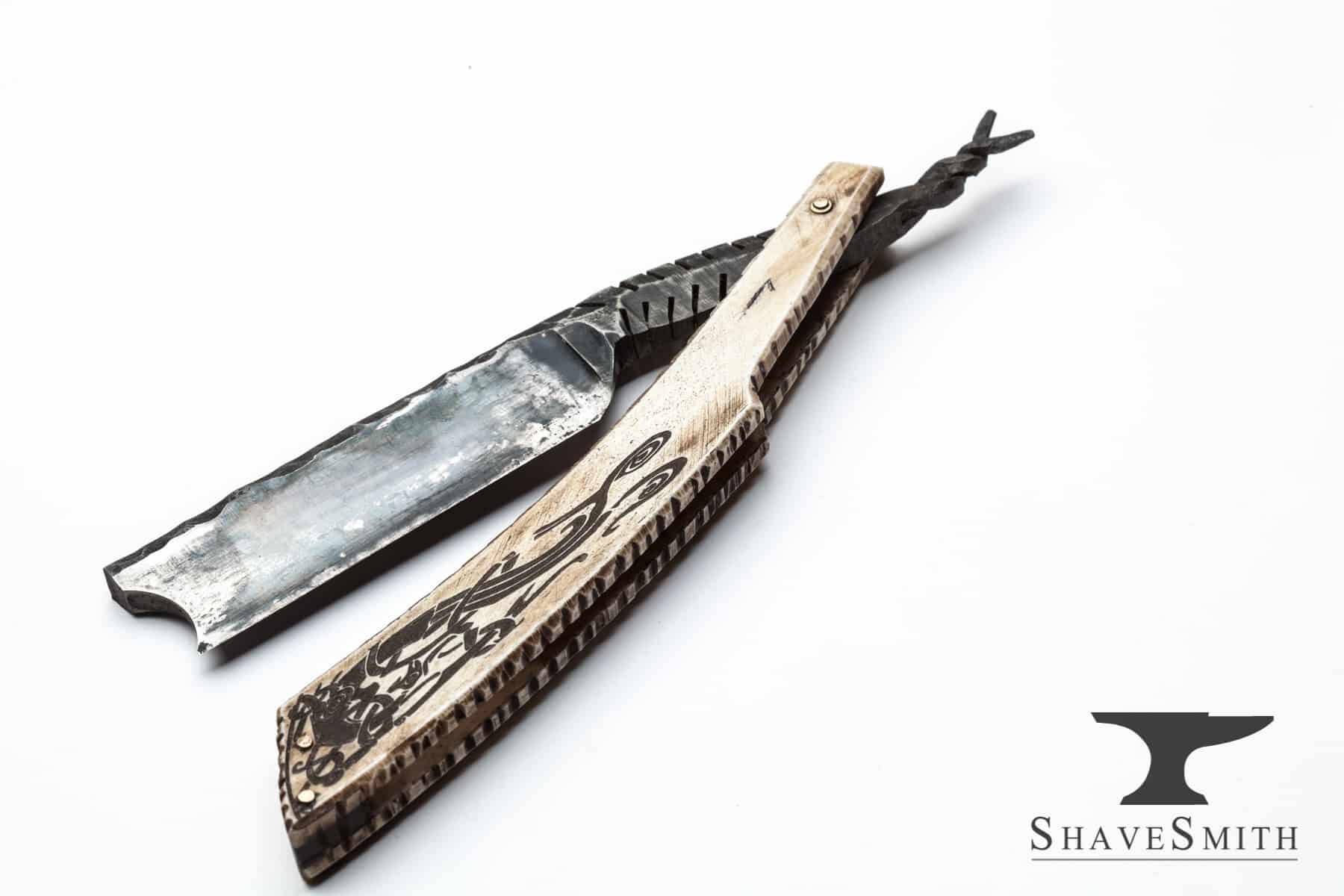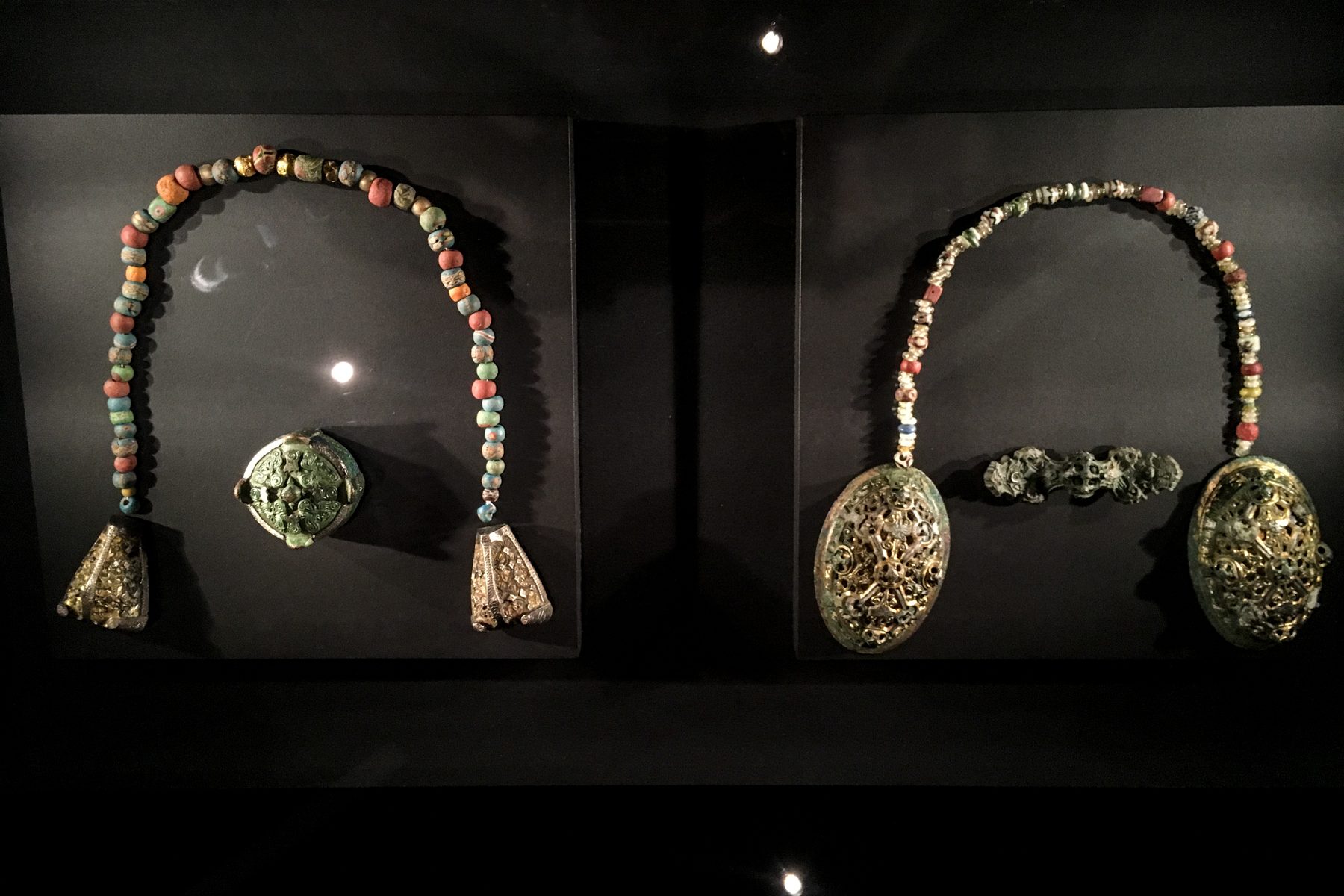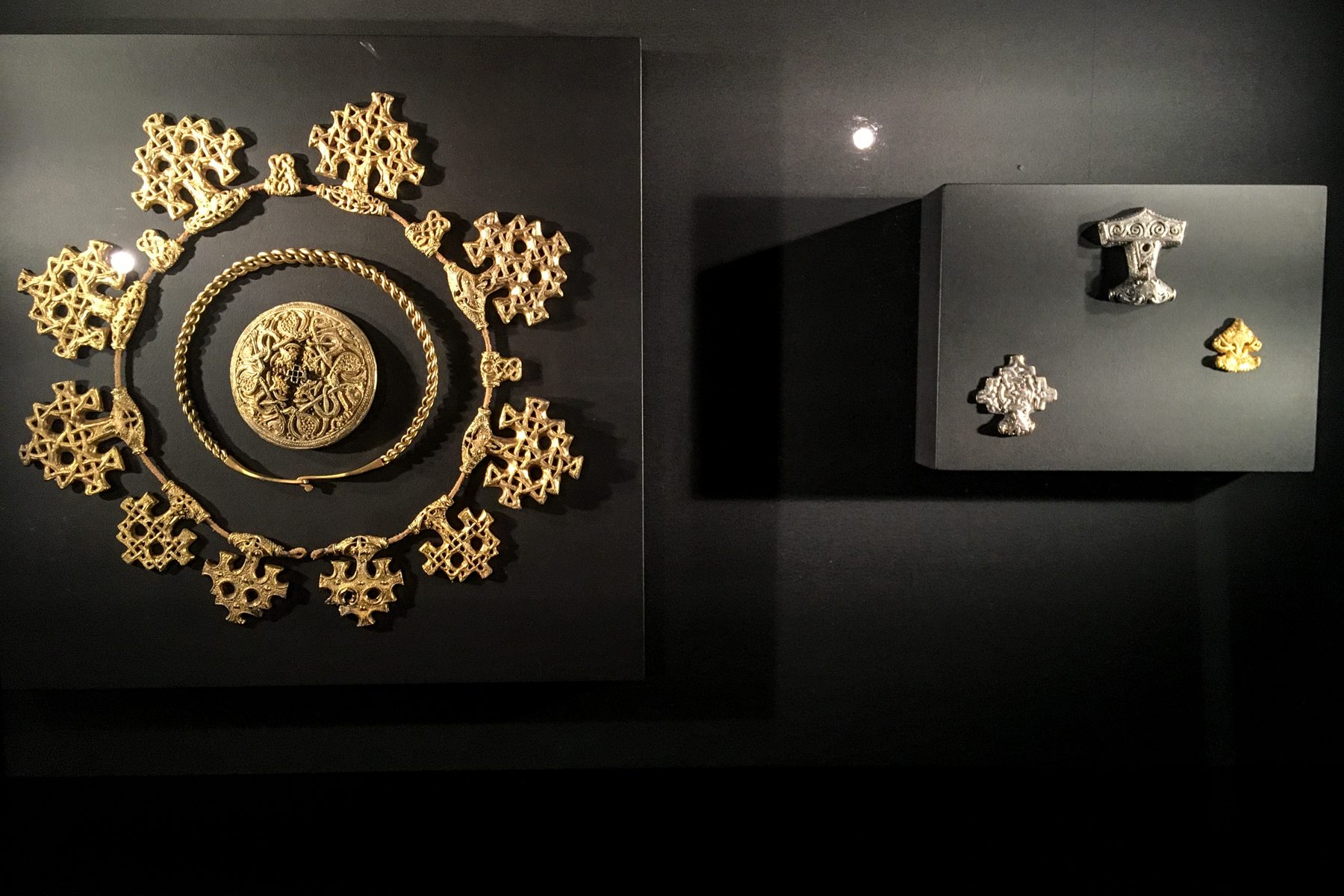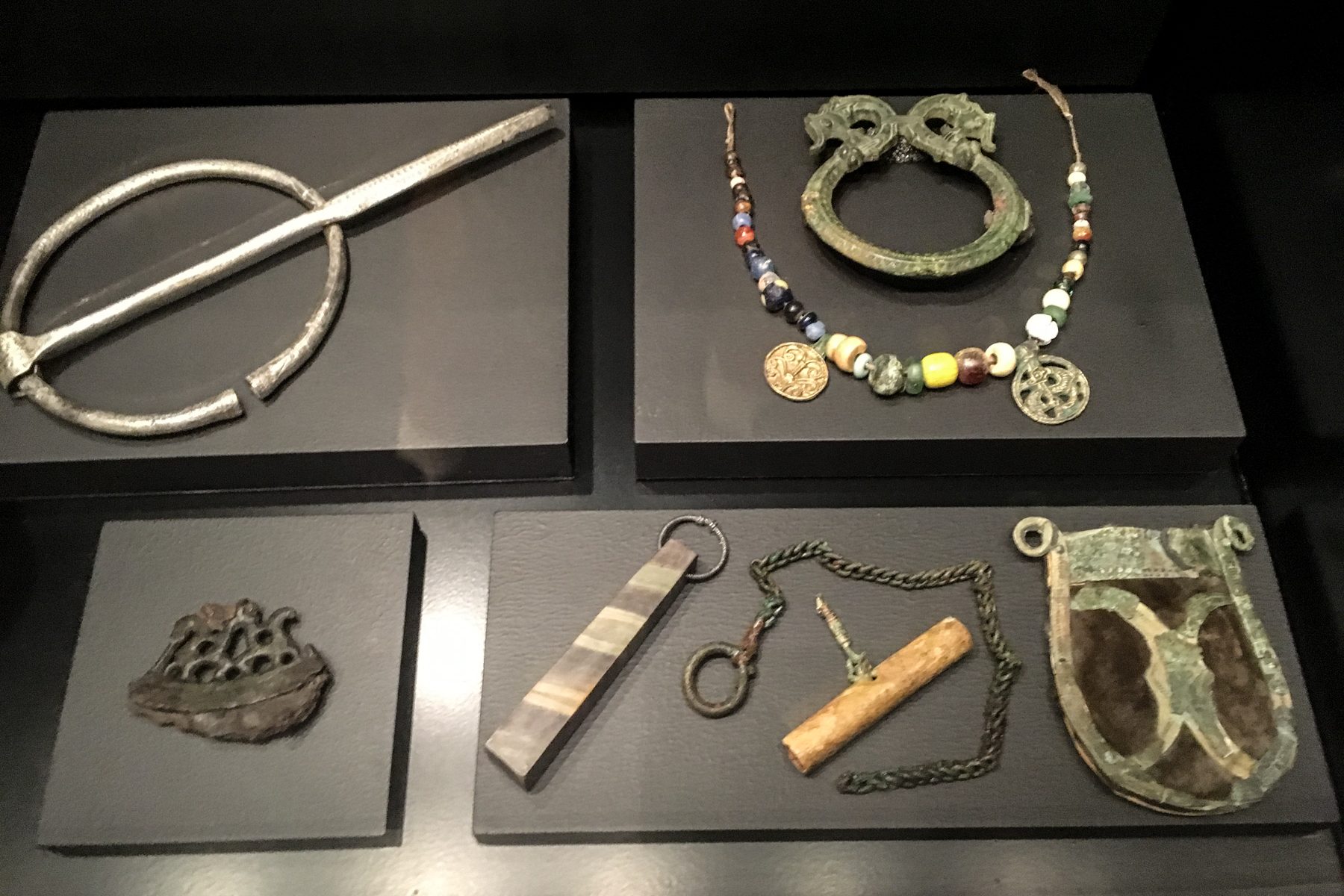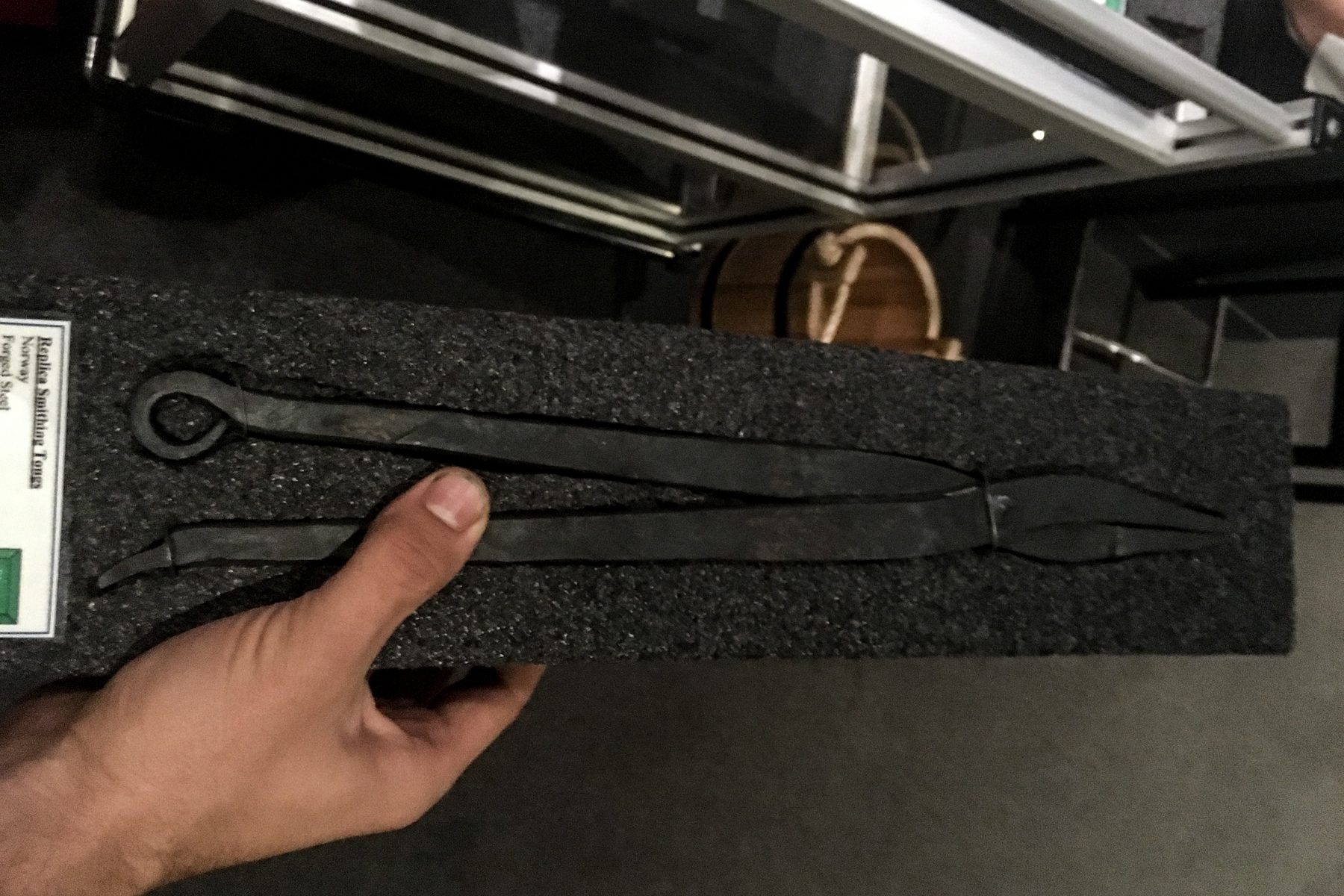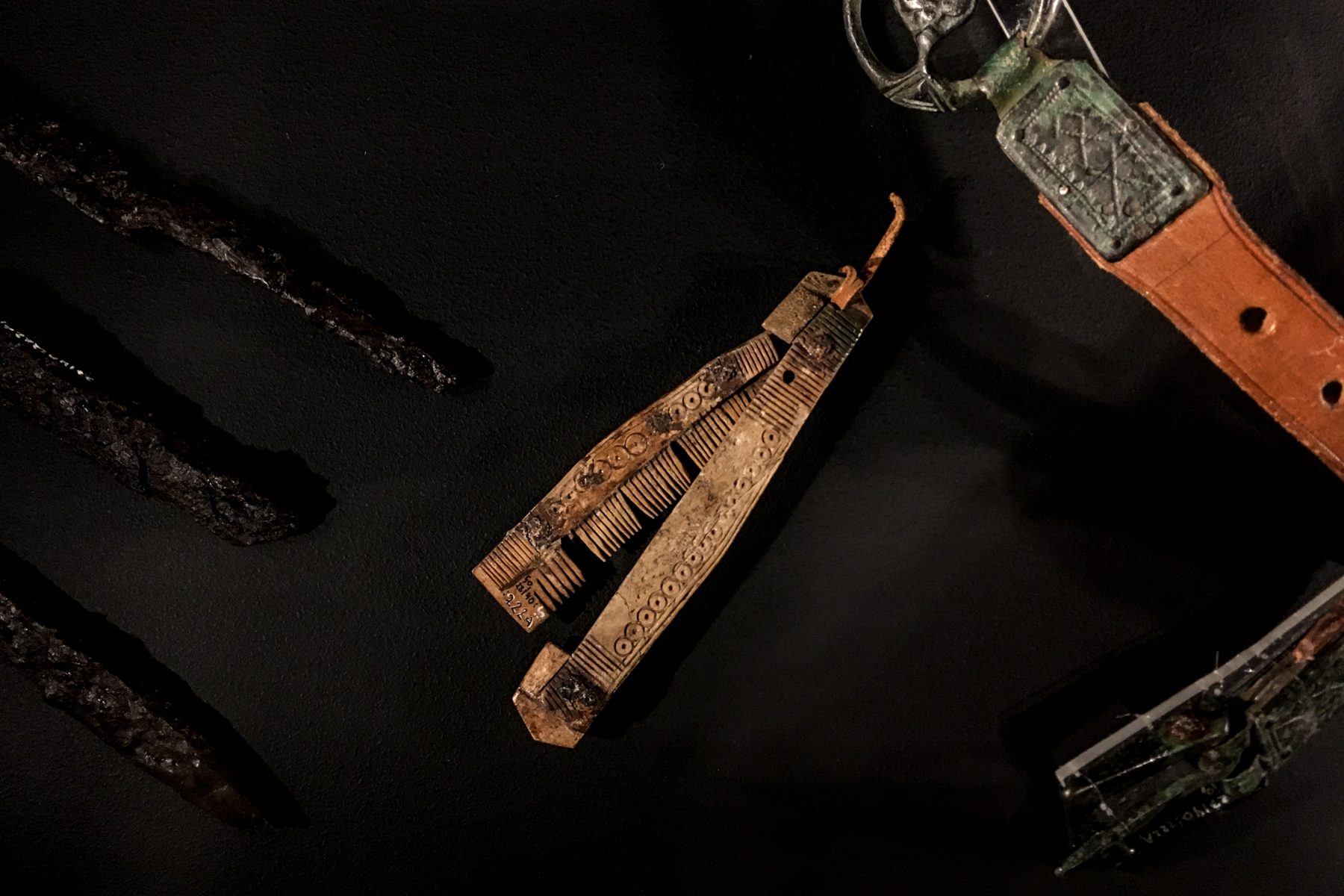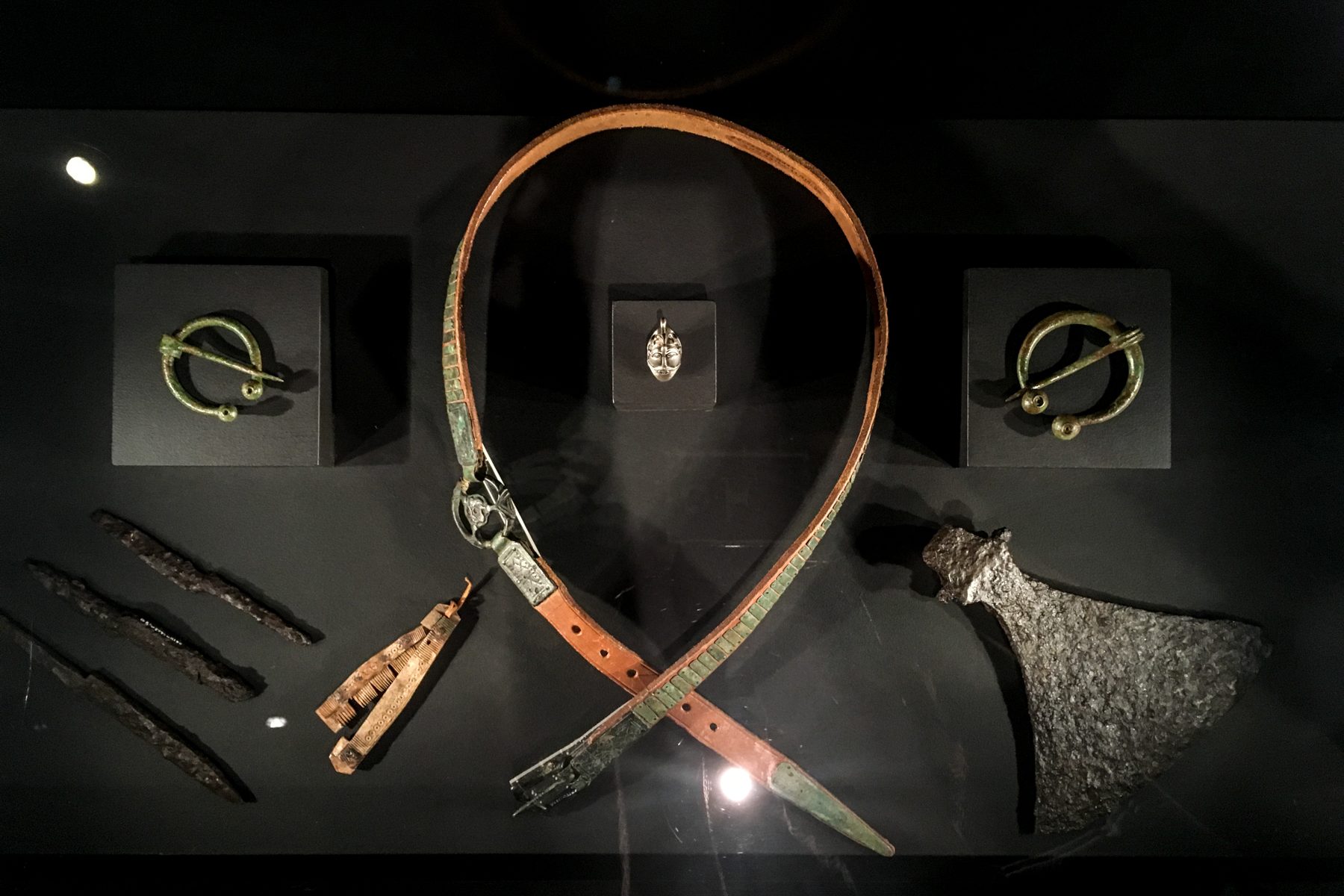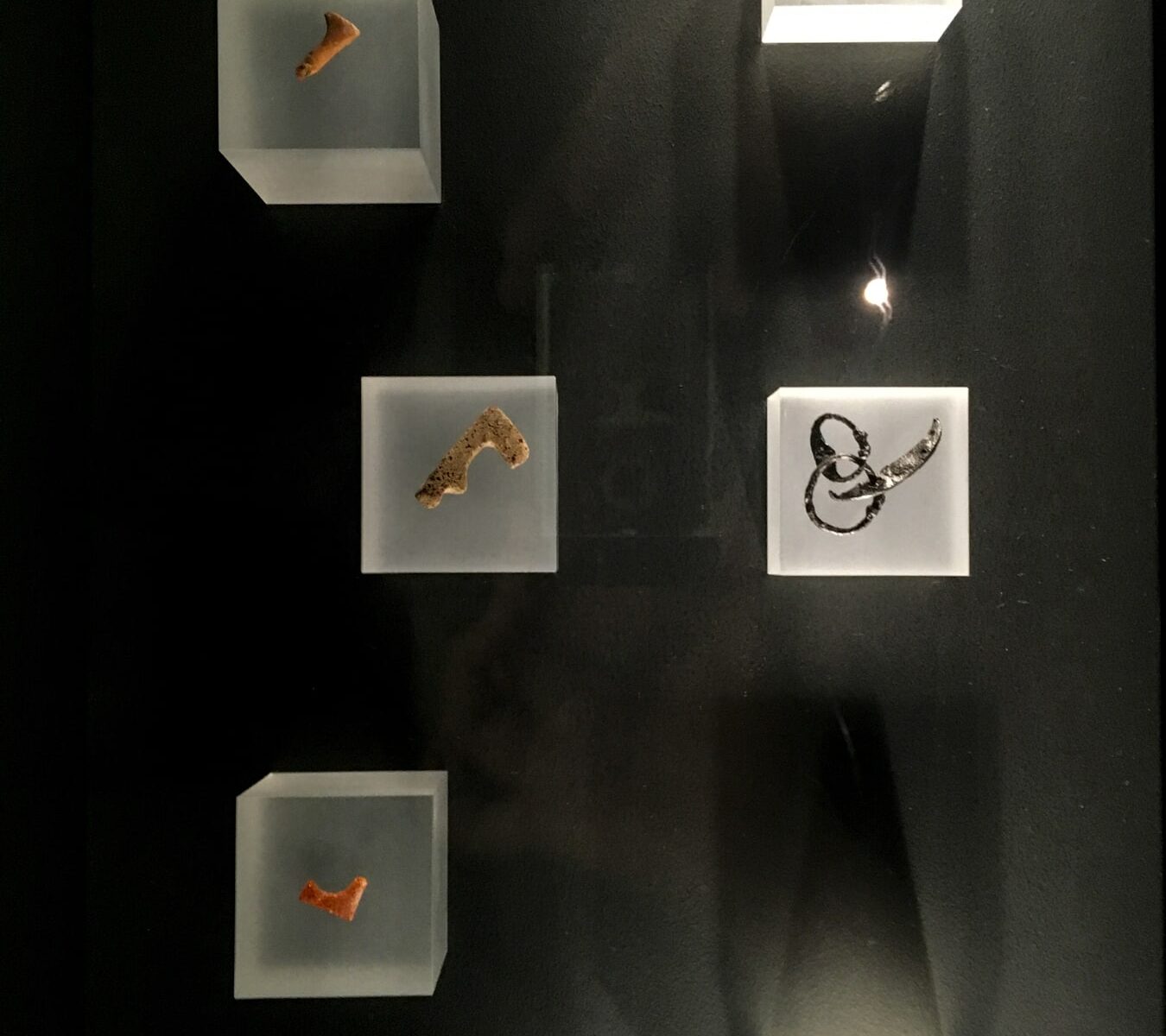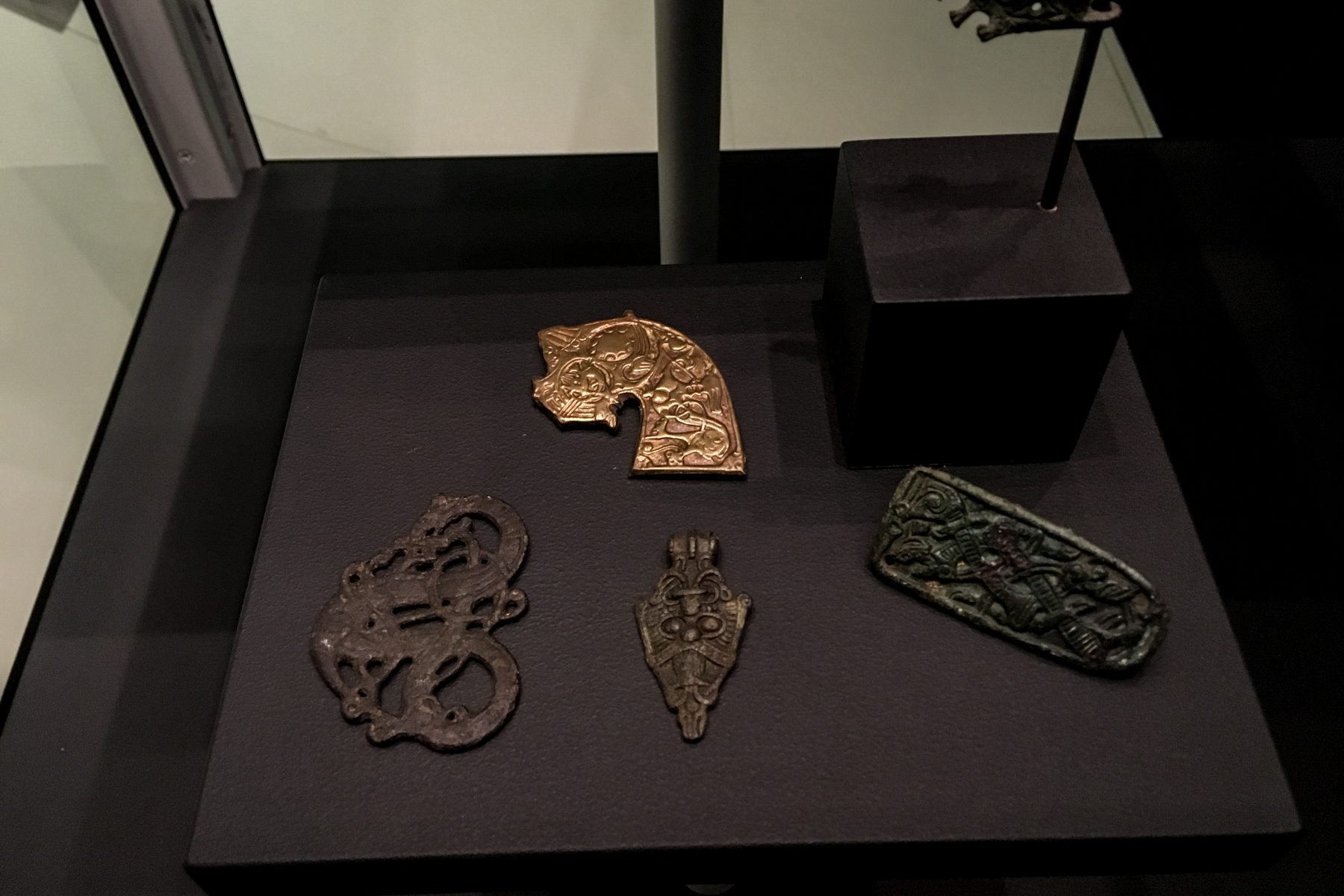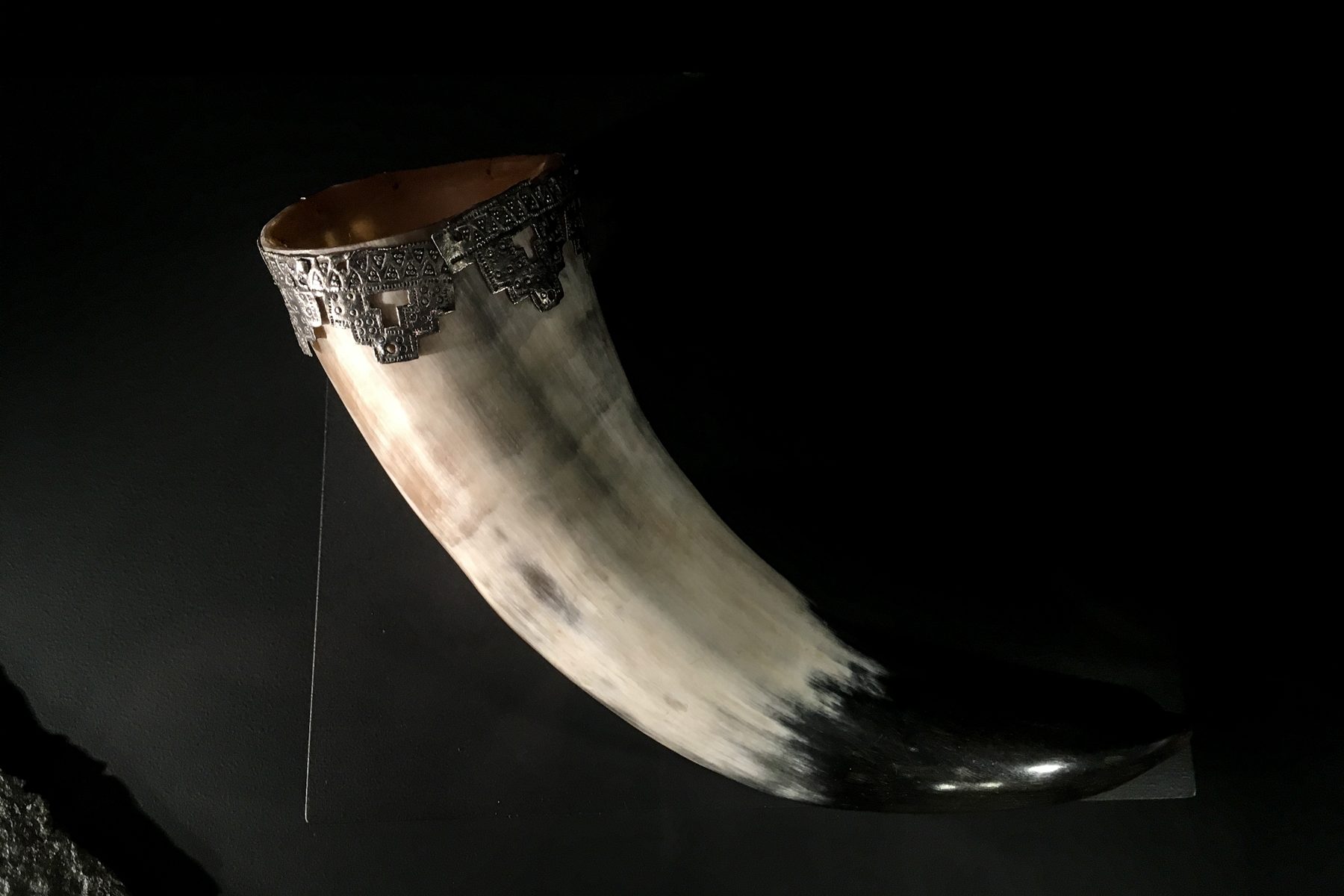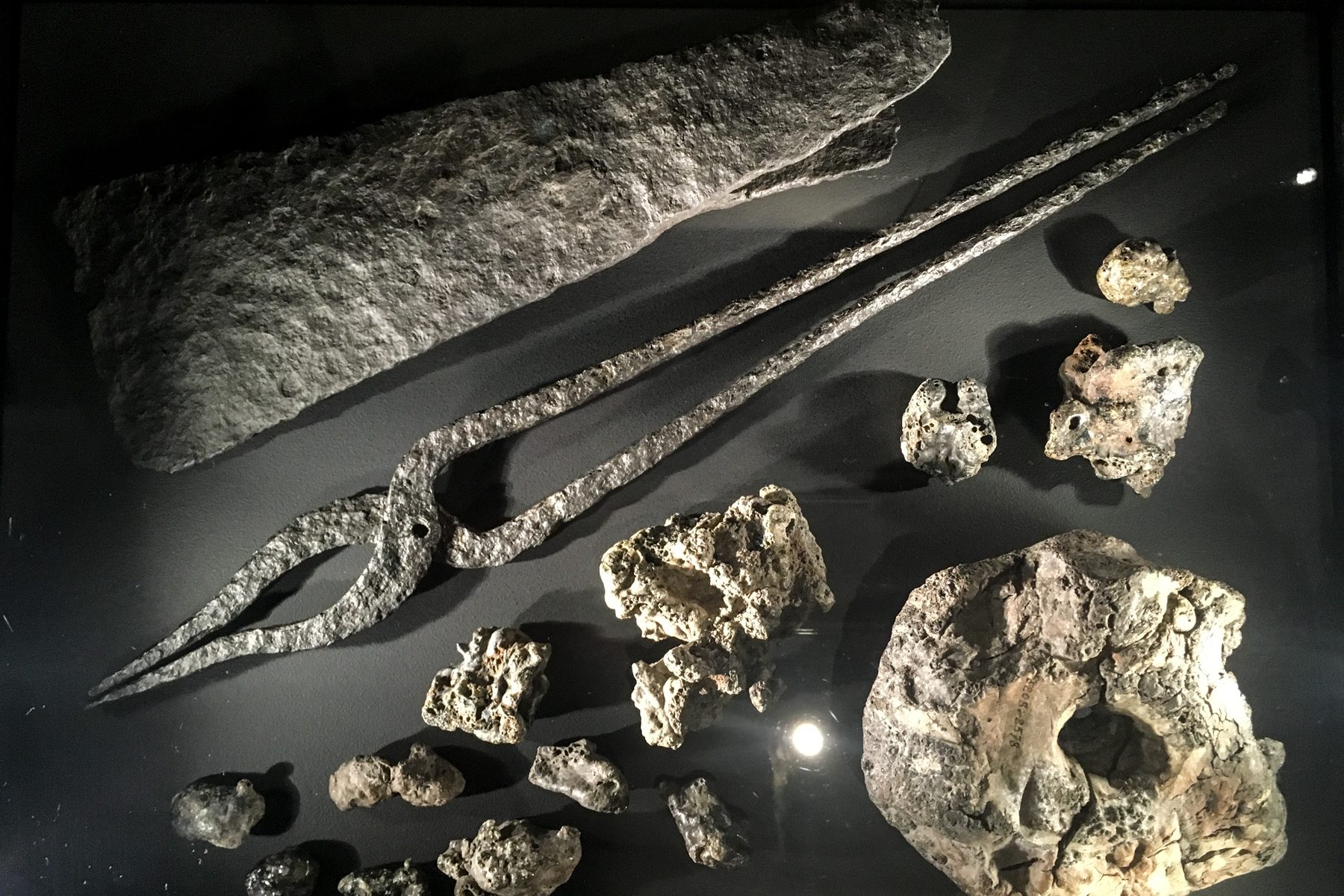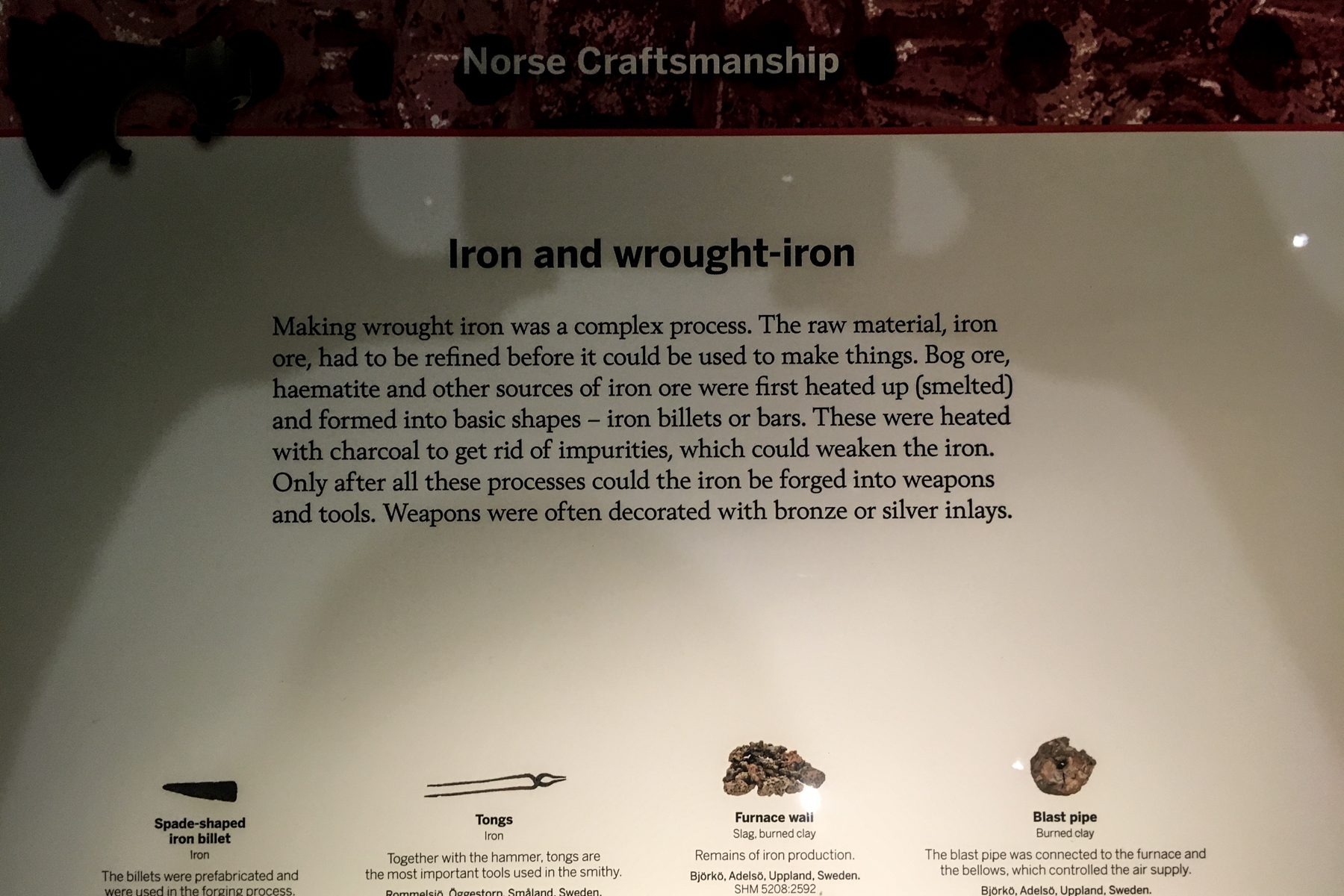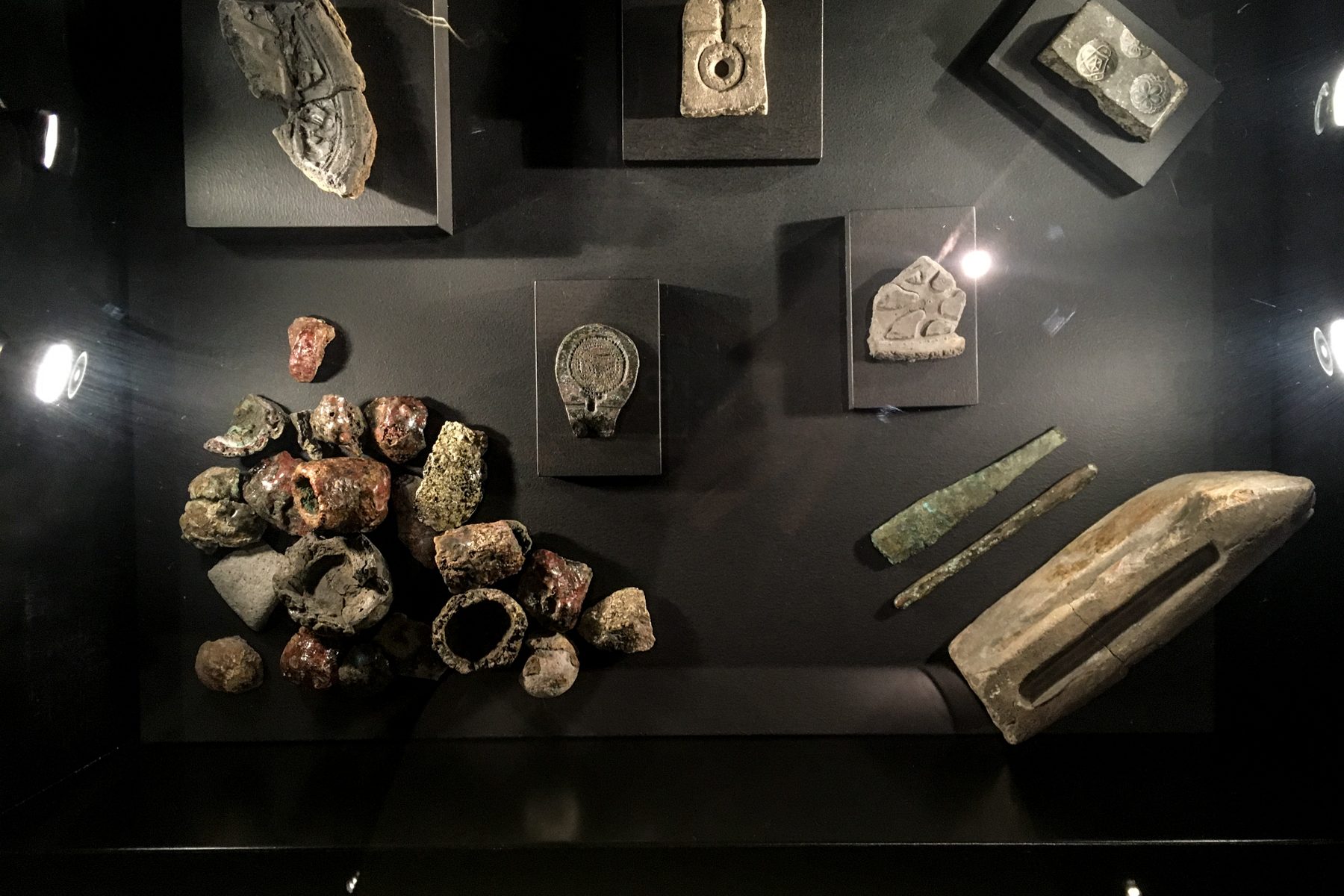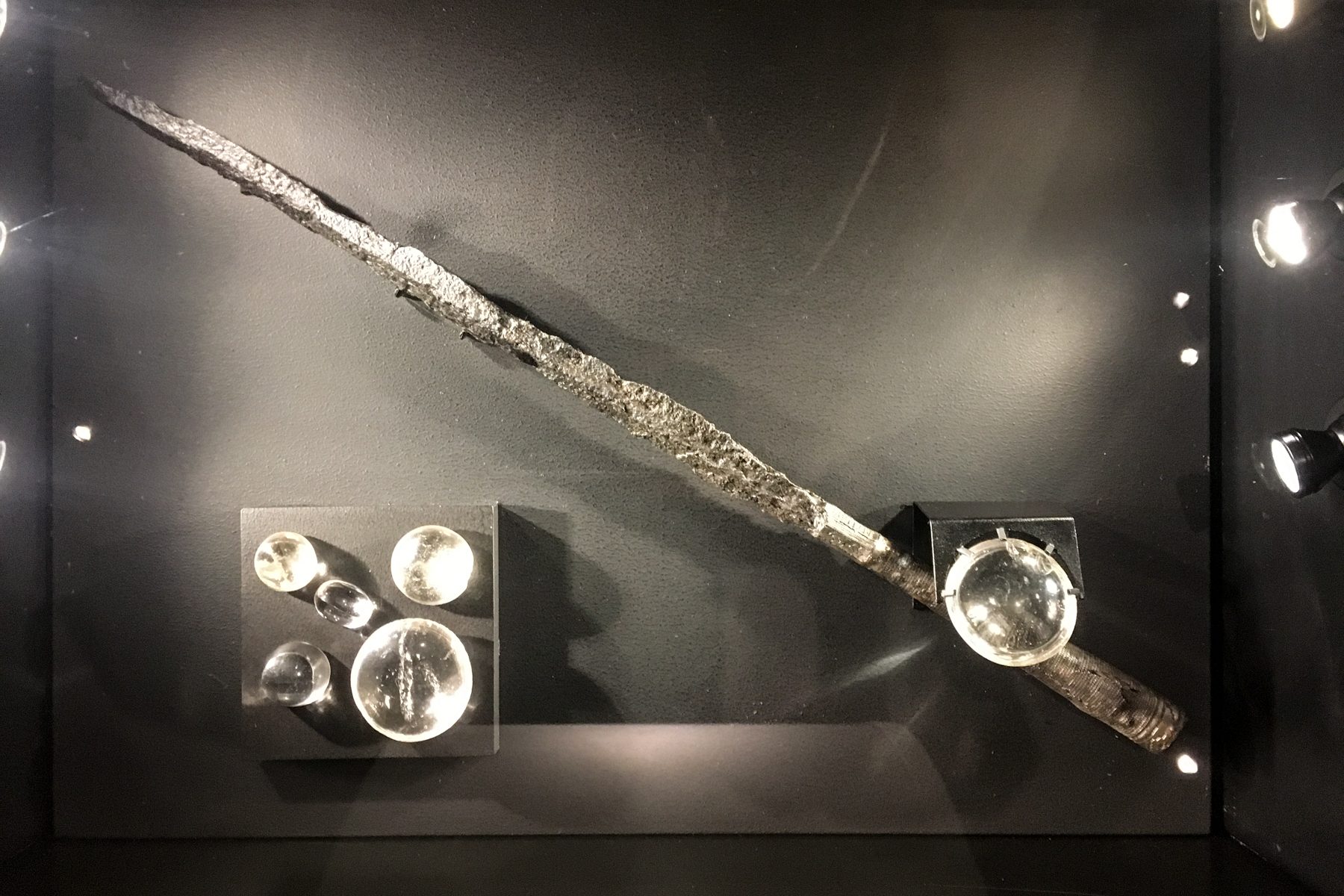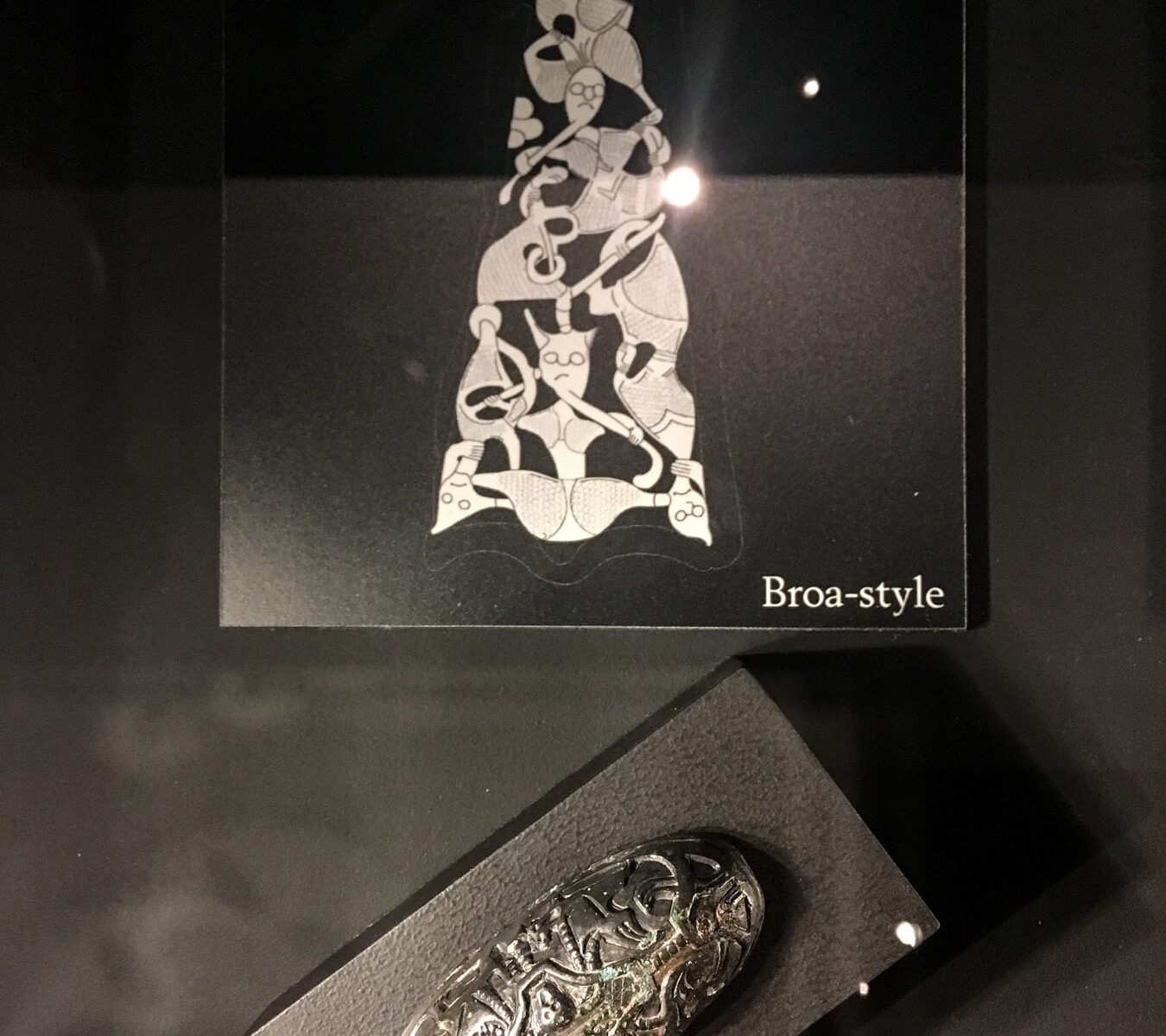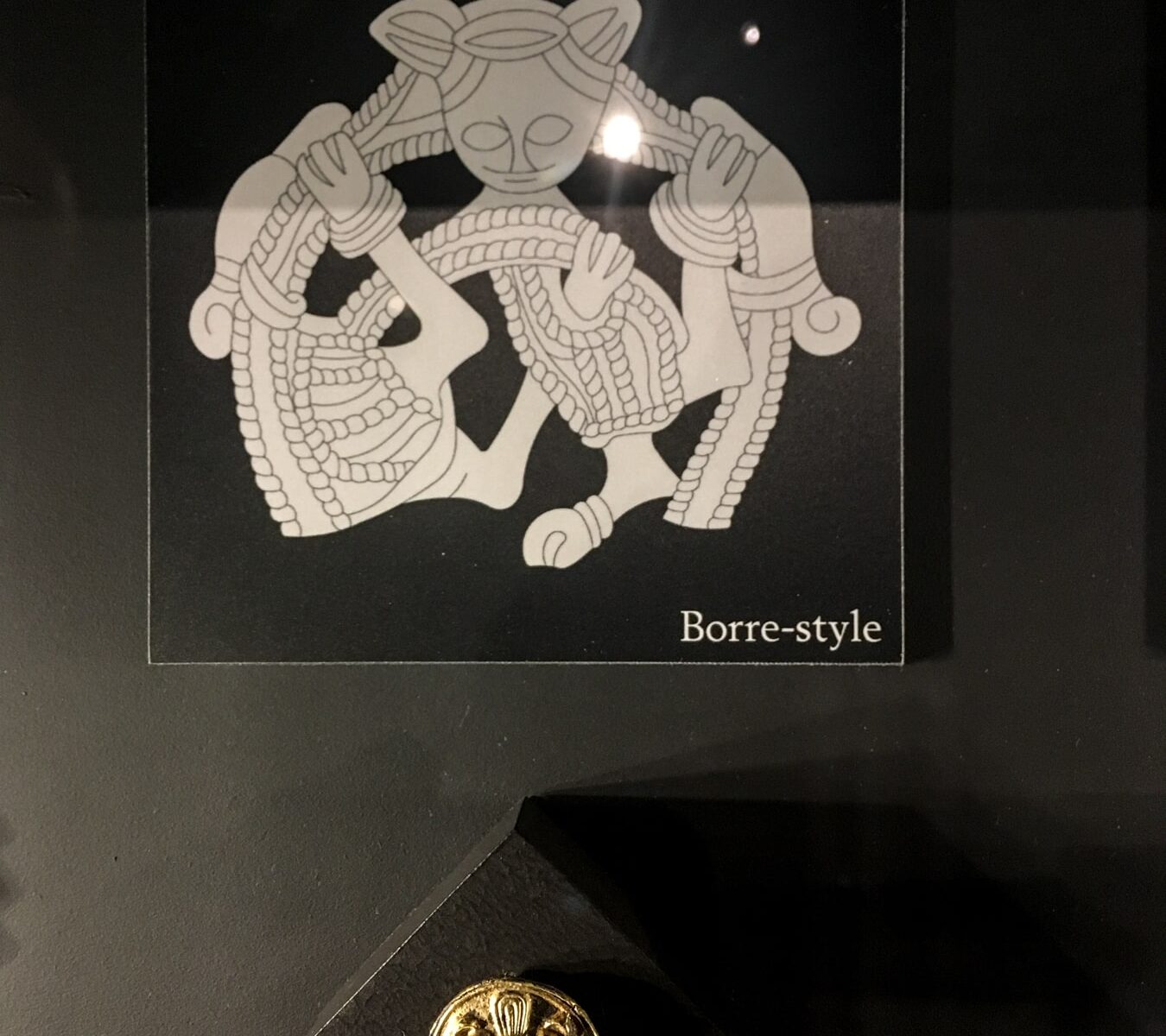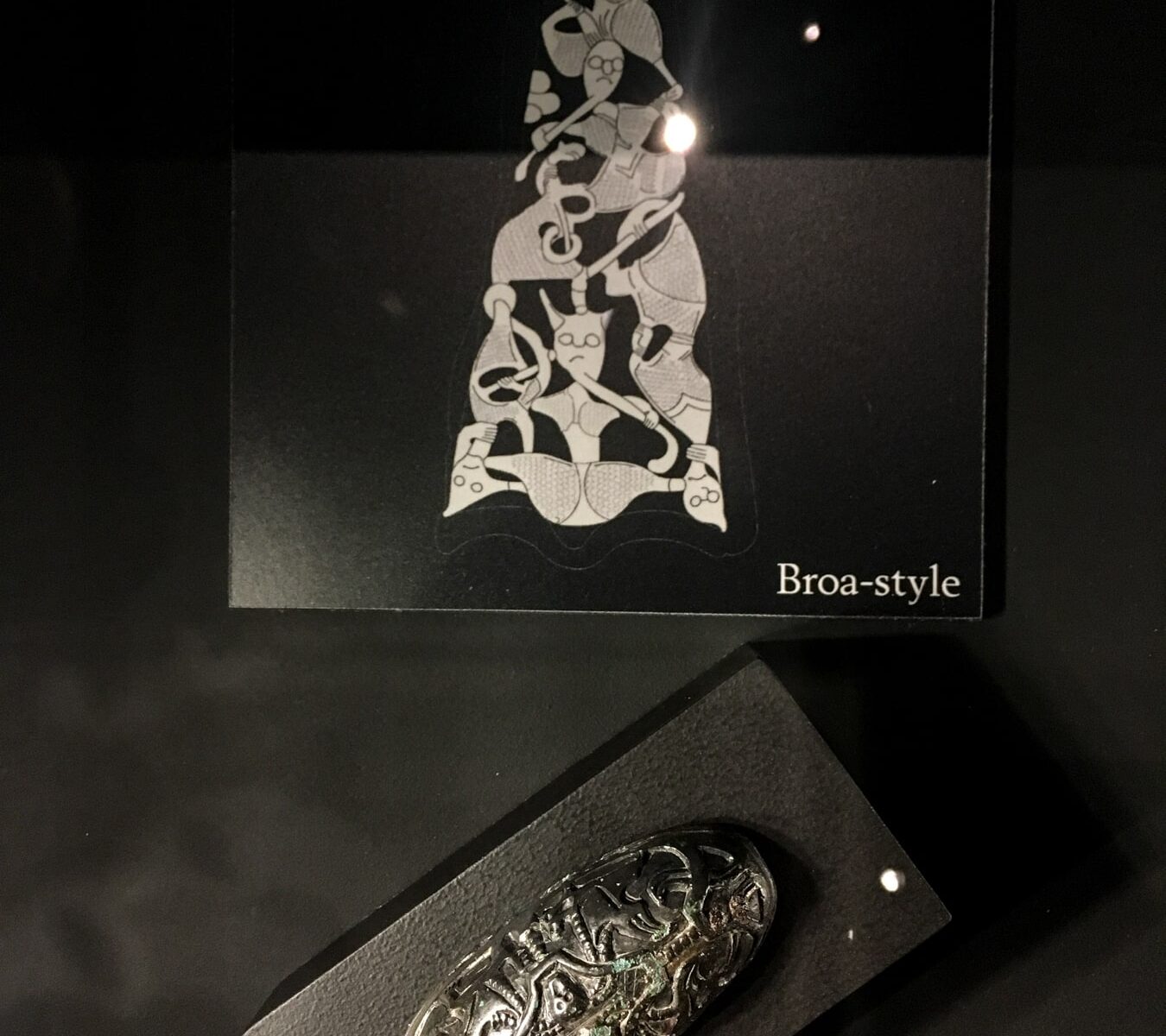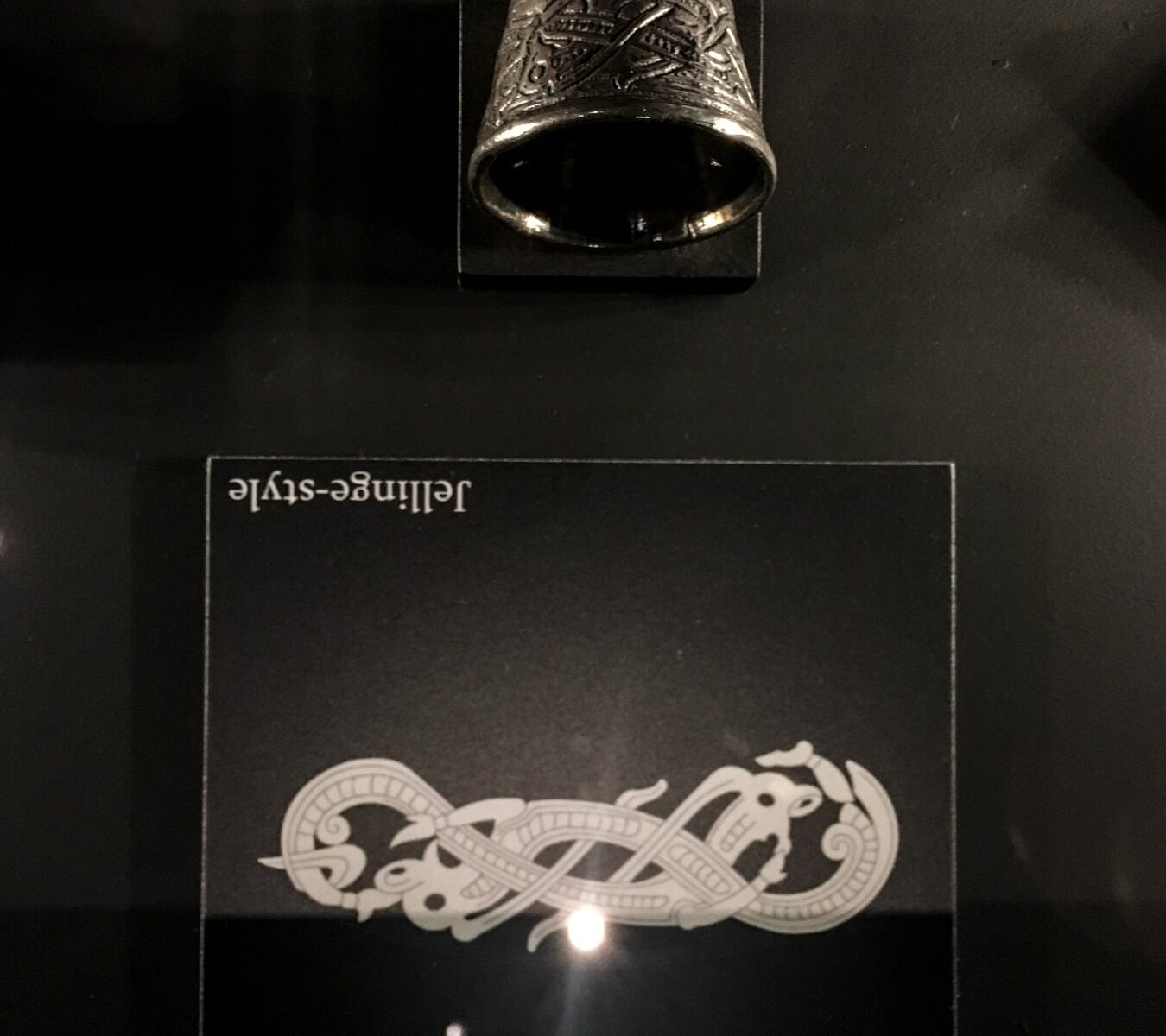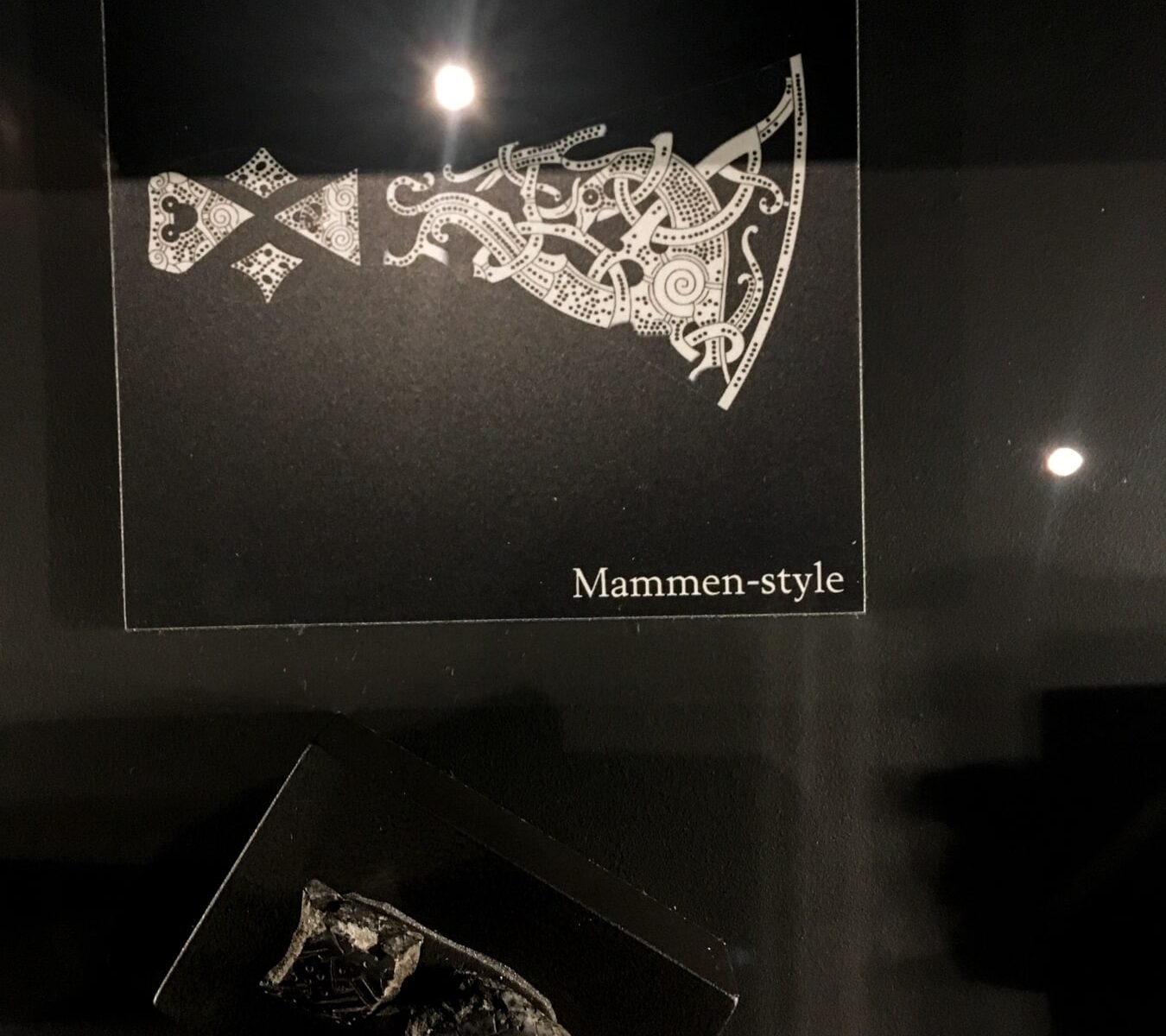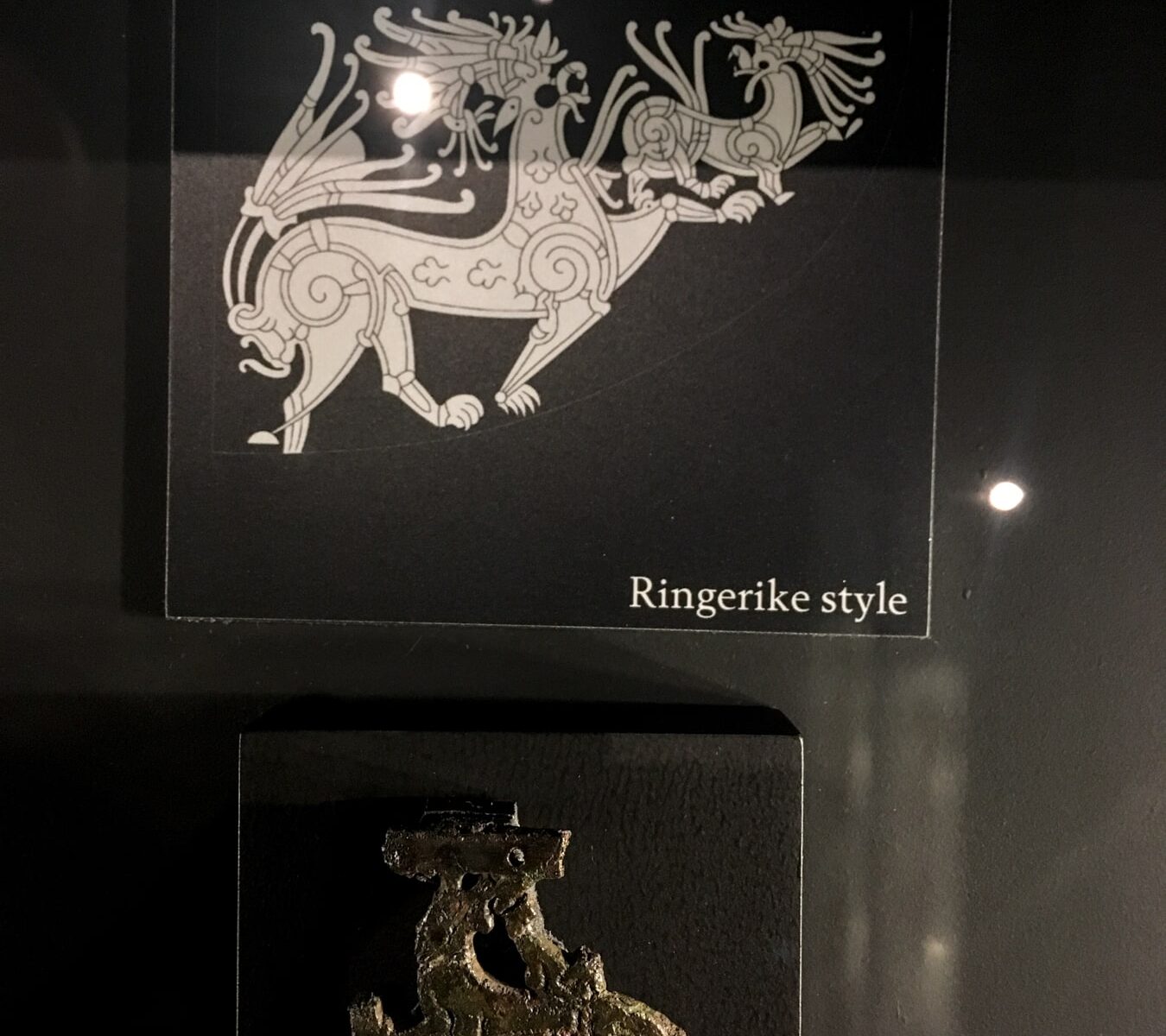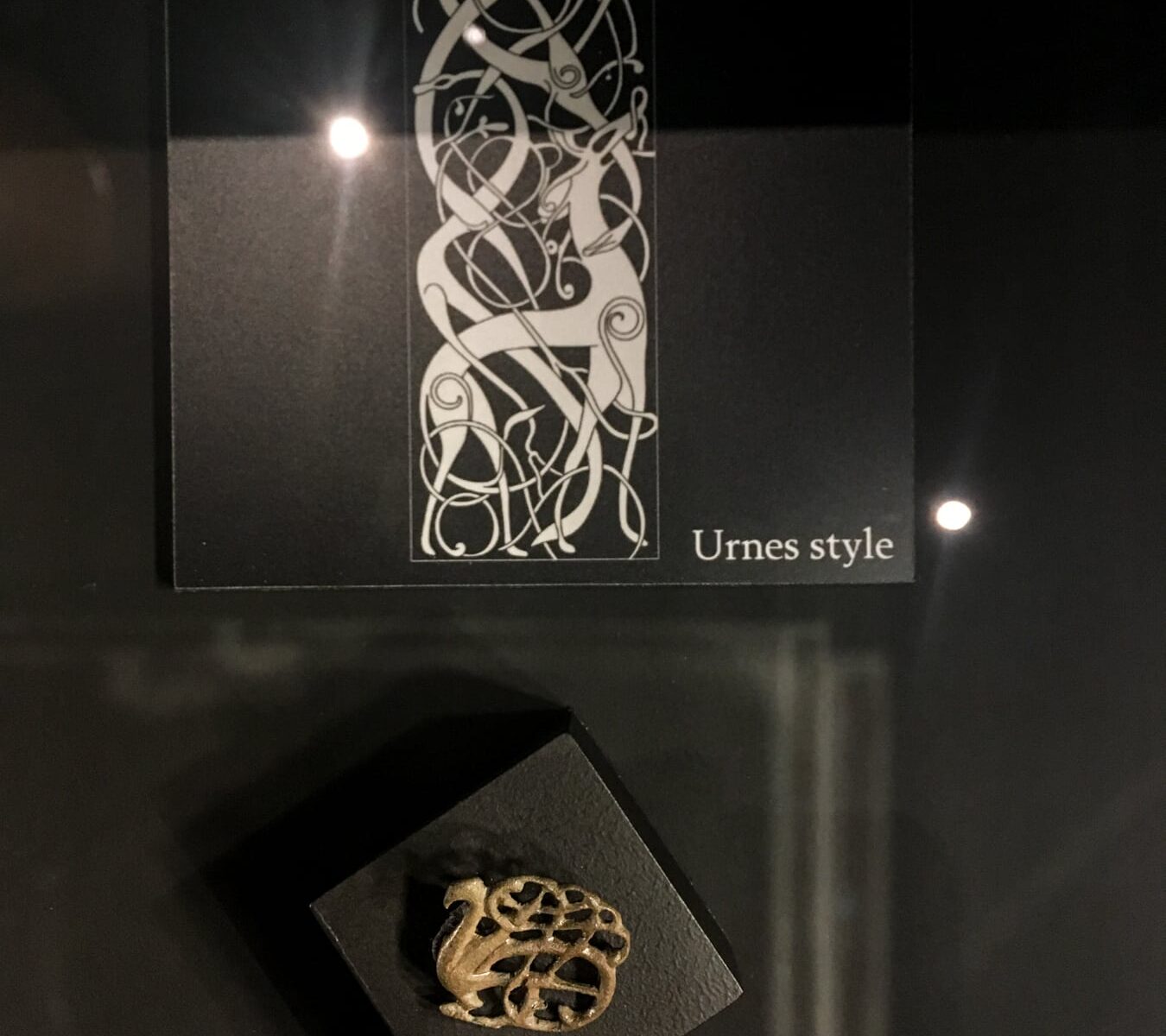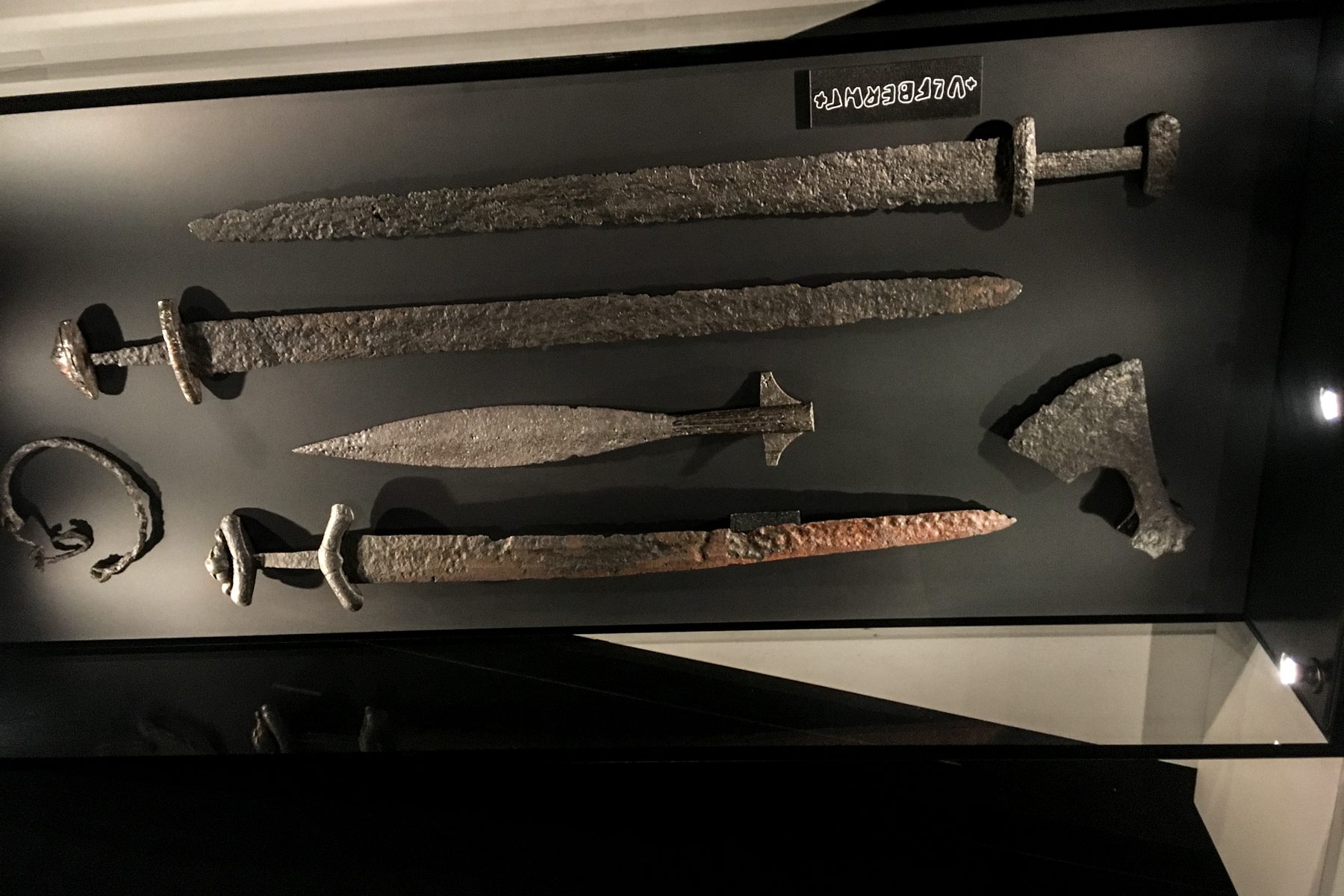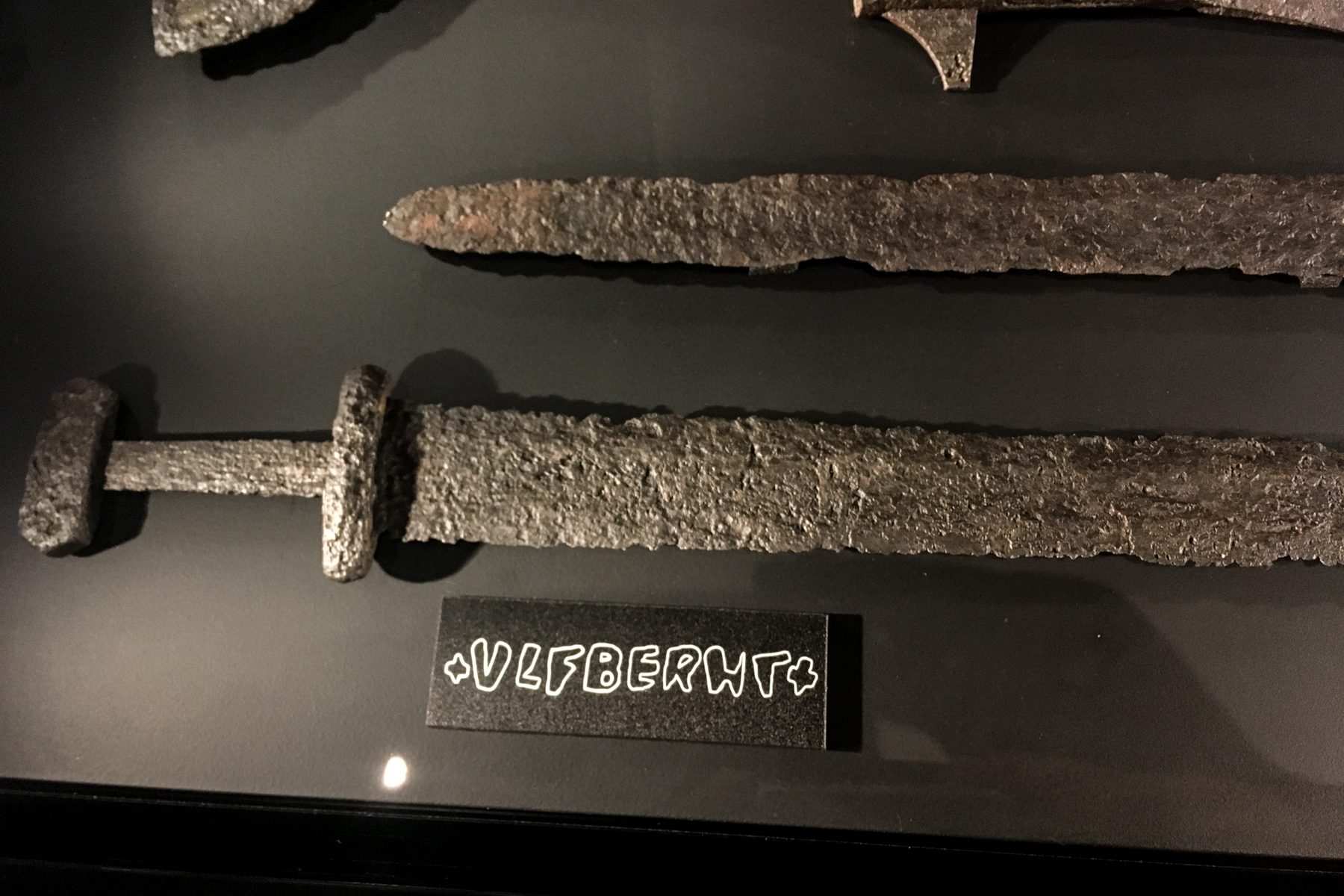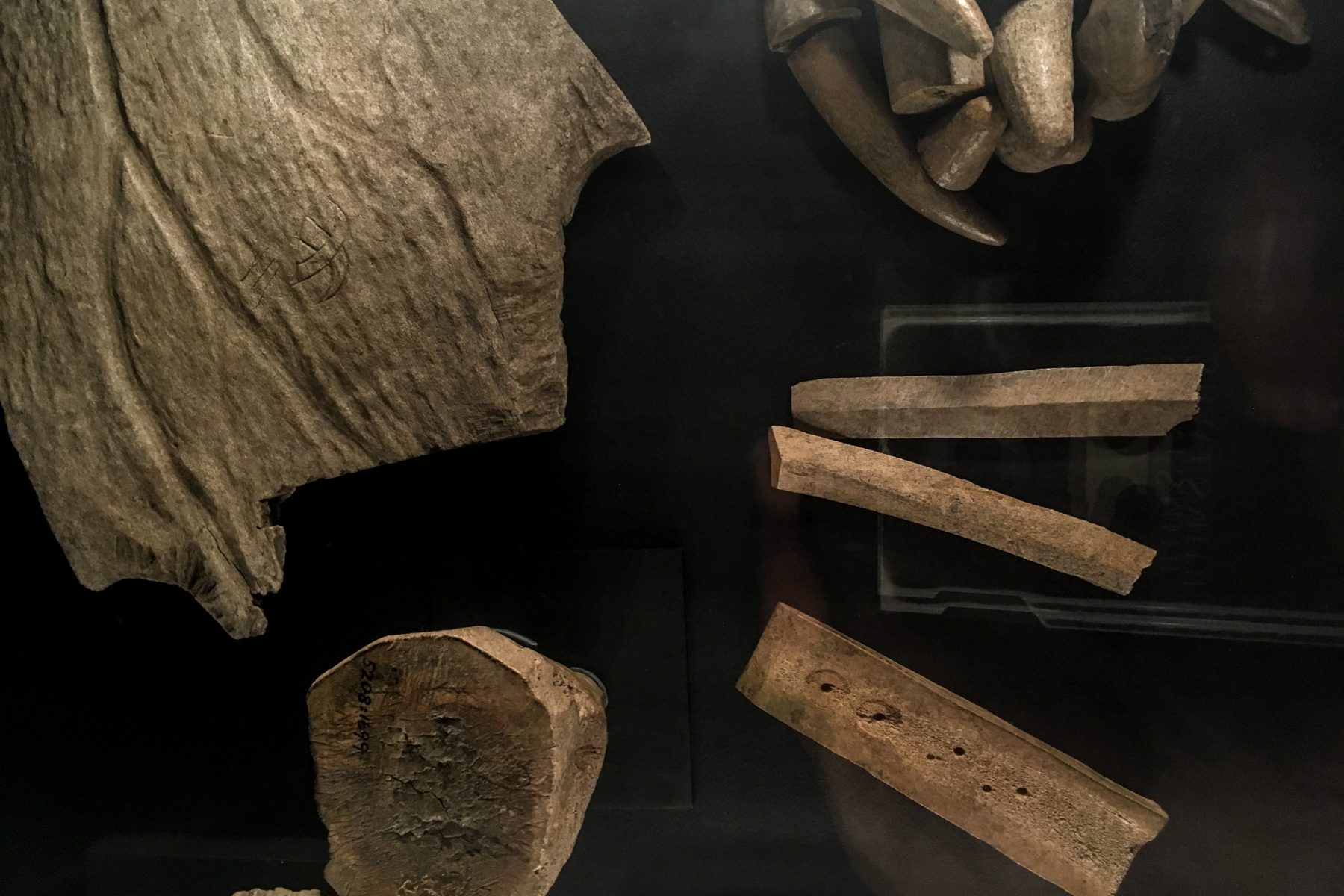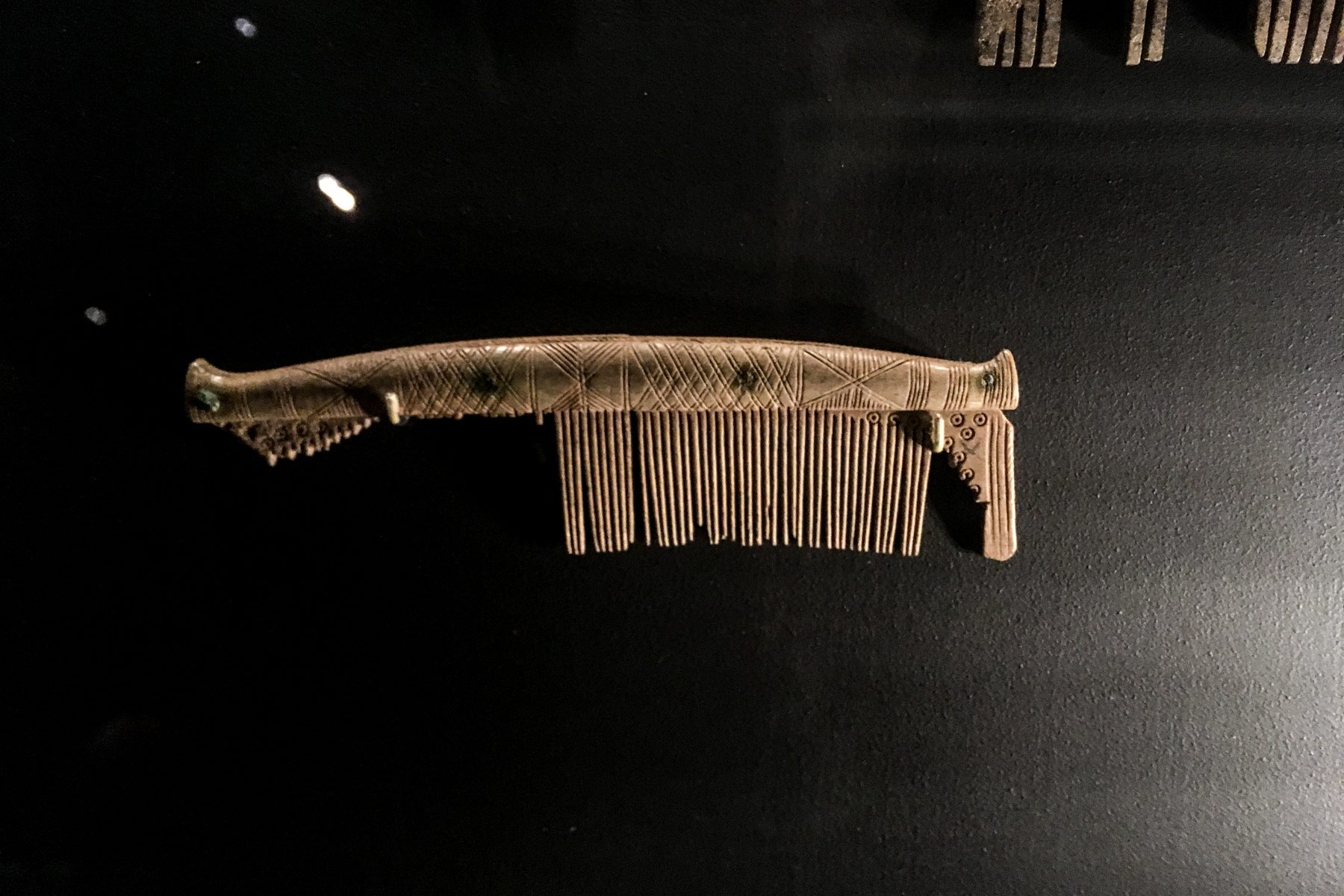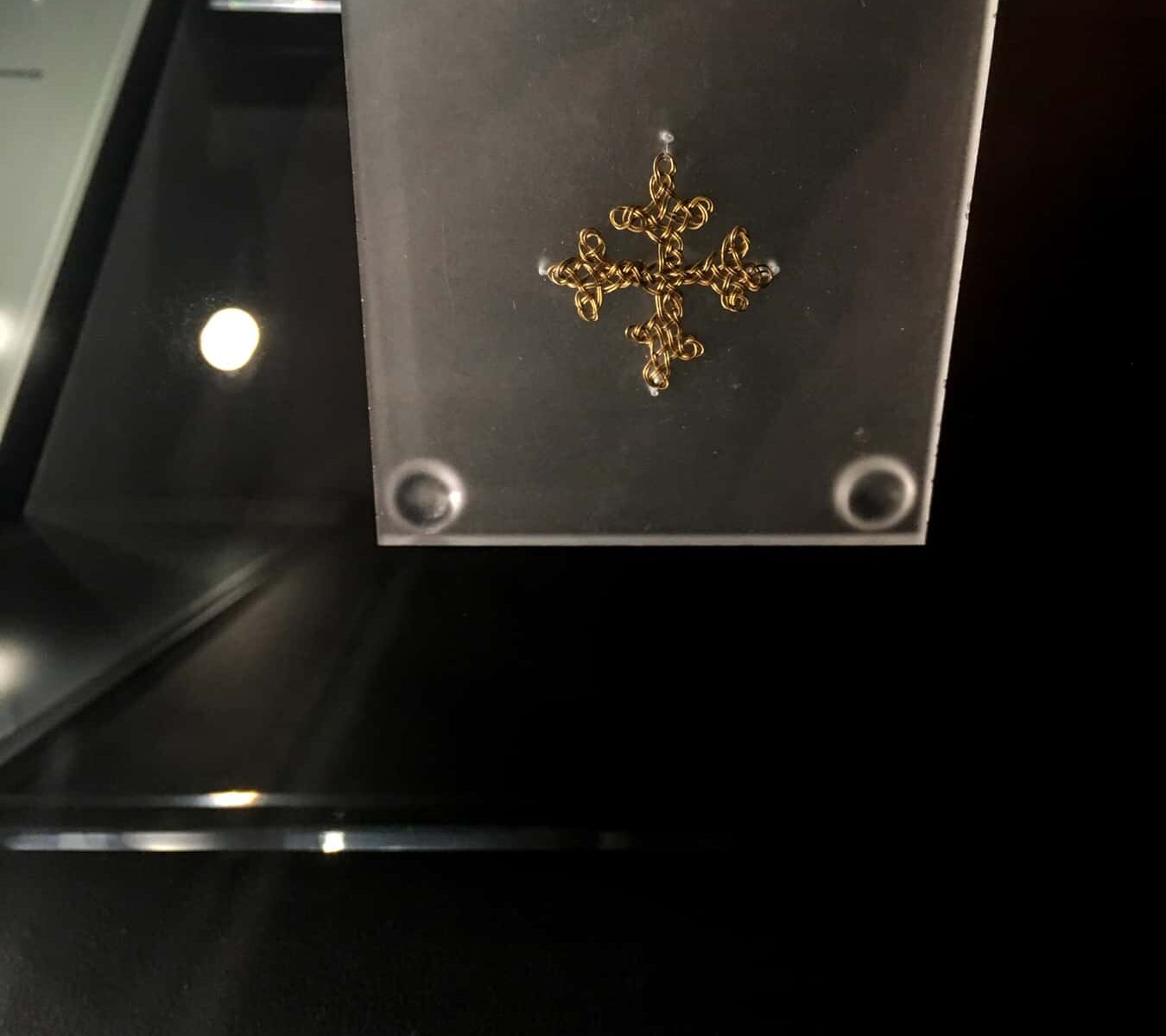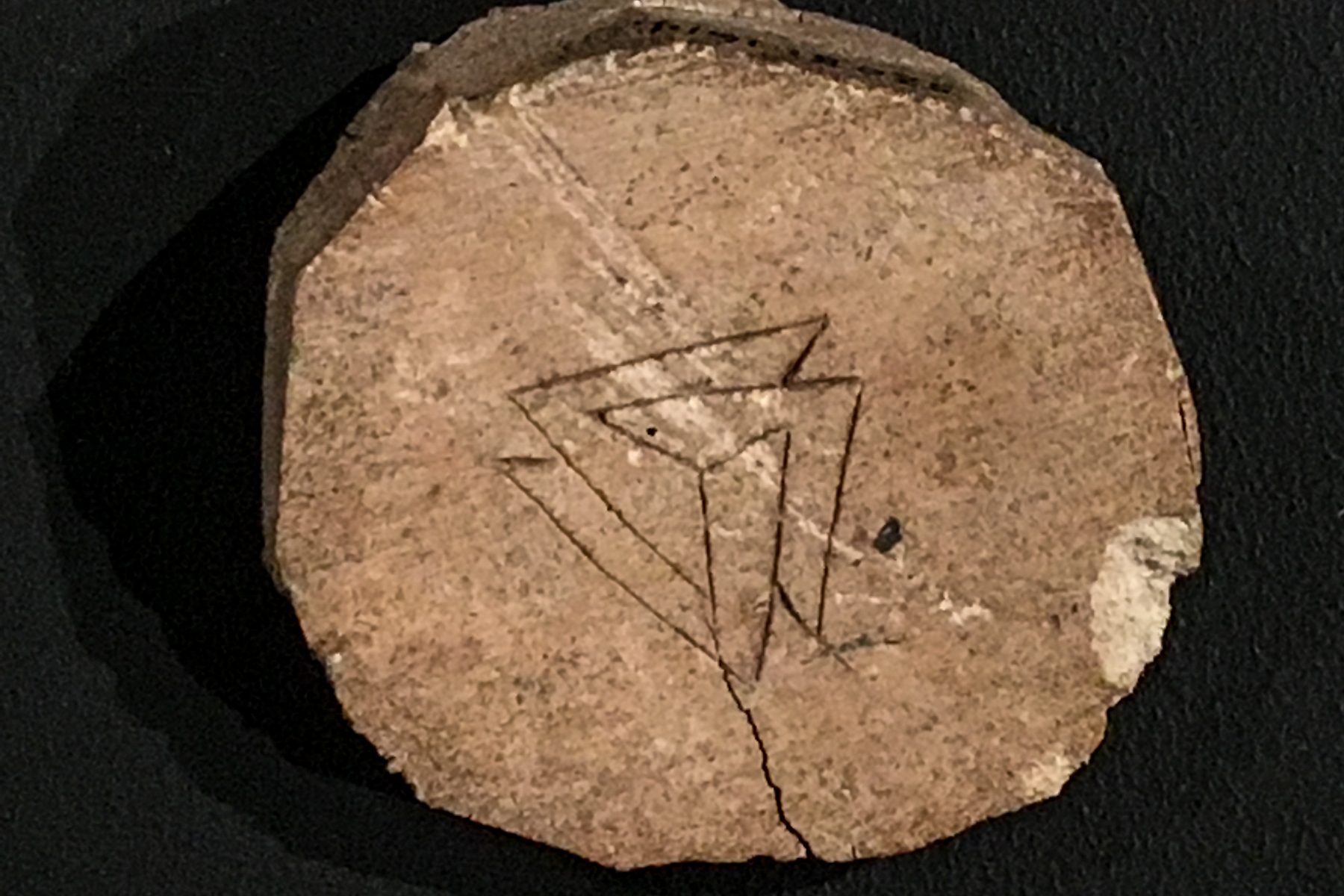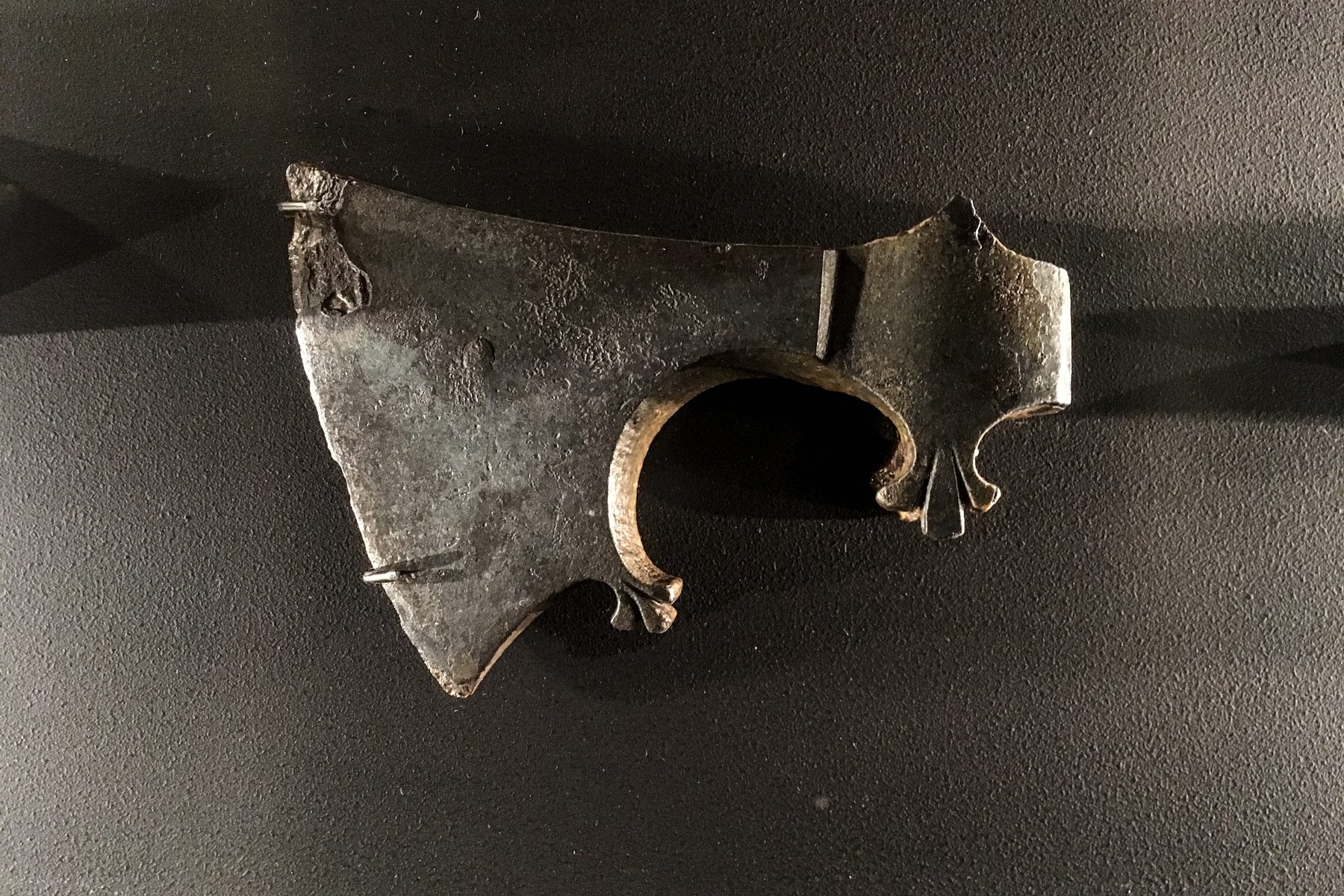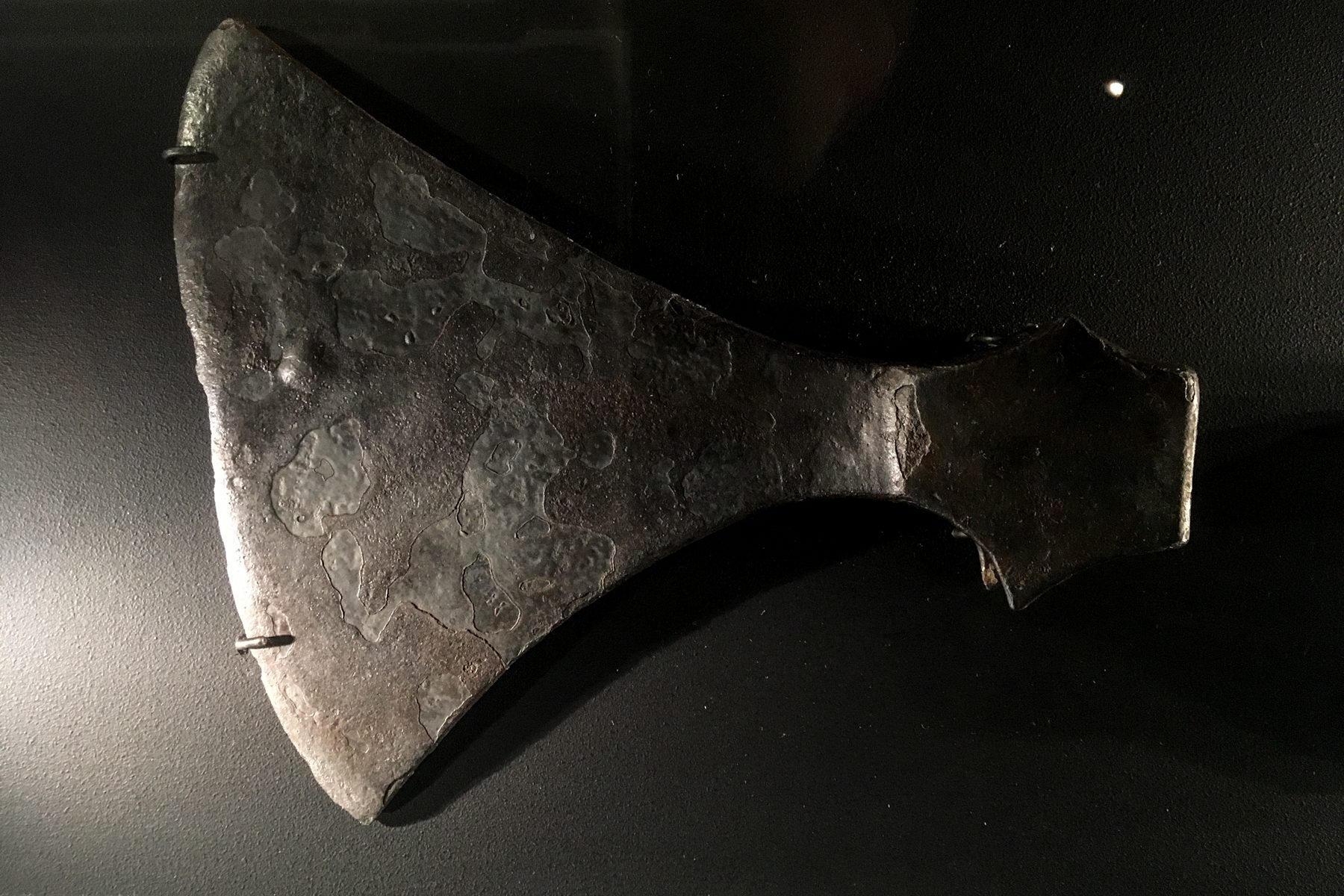
Pictures of My Denver Museum of Natural History Visit
- February 10, 2018
I was kindly given much time to finish this piece by the patron. In this time I was able to read Gaiman’s Norse mythology, go see the traveling exhibit of Nordic artifacts as it reached Denver, and experiment for several months with different finishes, materials and designs. I’m quite grateful for this time, since it created a personal attachment and cohesion to the piece I’m very fond of.
I love Norse mythology and viking lore. I wanted to create a piece that would be seem to be left behind by a “wanderer” (often a god in disguise) back in 800’s AD.
For me, the driving gods were Njord (god of sea, more or less), and Thor. So, an oceanic theme struck me, and I crafted the blade on the forge and at the bench to look like a skeletal fish (not the easiest shape I’ve done).
The finish I put to the steel is an antiquation that was done at first by accident, then further developed to look like dark heavy rain clouds atop an gloomed fjord. I feel the aqueous look, combined with some visible grind lines achieve this nicely. Letting the blade catch light can put lighting in those clouds.
The scales were inspired by my museum visit. I was quite surprised that the notion of Vikings being unclean, or dirty was a filthy myth. They were clean, cultured and meticulous, and I got to see the many instruments they used for their personal hygiene. Sadly no razors, but that let my imagination set sail.
I used camel bone since bone was common among these instruments, and they did have contact with Africa. Additionally, I engraved the blade with an historical engraving taken from an axe. I manipulated it to fit the shape and feel of the razor (this entwined engraving is Mammen style of viking art, 970–971). The profile of the scales were textured in ways that fit the look of the museum pieces, and I then used steel grindings to crudely fill the pores of the camel bone to make it look “dug up”, and sealed it with paste wax (museum wax). Ancient (2-5,000 year old) wood was used for the wedge.
I will miss having this good friend in my shop, but I’m quite happy it’s going to a good home.
- 7/8" Wide Blade
- Ancient Bog Oak Scales
- Camel Bone Handles
- Hand Forged
- Spanish Point

